Primed for Ignition
Meet the minds behind the machine that helped pave the way for 2022’s fusion ignition breakthrough.
PAGE 8



Meet the minds behind the machine that helped pave the way for 2022’s fusion ignition breakthrough.
PAGE 8




Coming online in 2024, El Capitan is the National Nuclear Security Administration’s (NNSA) premiere exascale-class supercomputer. It is projected to be one of the most powerful and energy-efficient high performance computers in the world, capable of more than two exaflops—or two quintillion double-precision floating-point operations per second.
El Capitan is the flagship supercomputer for NNSA’s Advanced Simulation and Computing (ASC) program, and it will be used by the NNSA Tri-Labs (Livermore, Sandia, and Los Alamos national laboratories) to ensure the safety, security, and reliability of the nation’s enduring and future nuclear stockpile in the absence of underground nuclear testing.




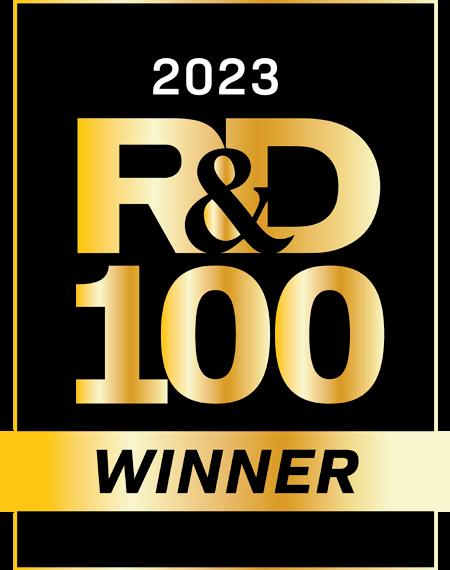
Winners and Finalist
UMap A fast, extensible memorymapping library for diverse datastores
EXUDE Elite concentrates light from multiple lasers with different wavelengths into a single, high-power beam
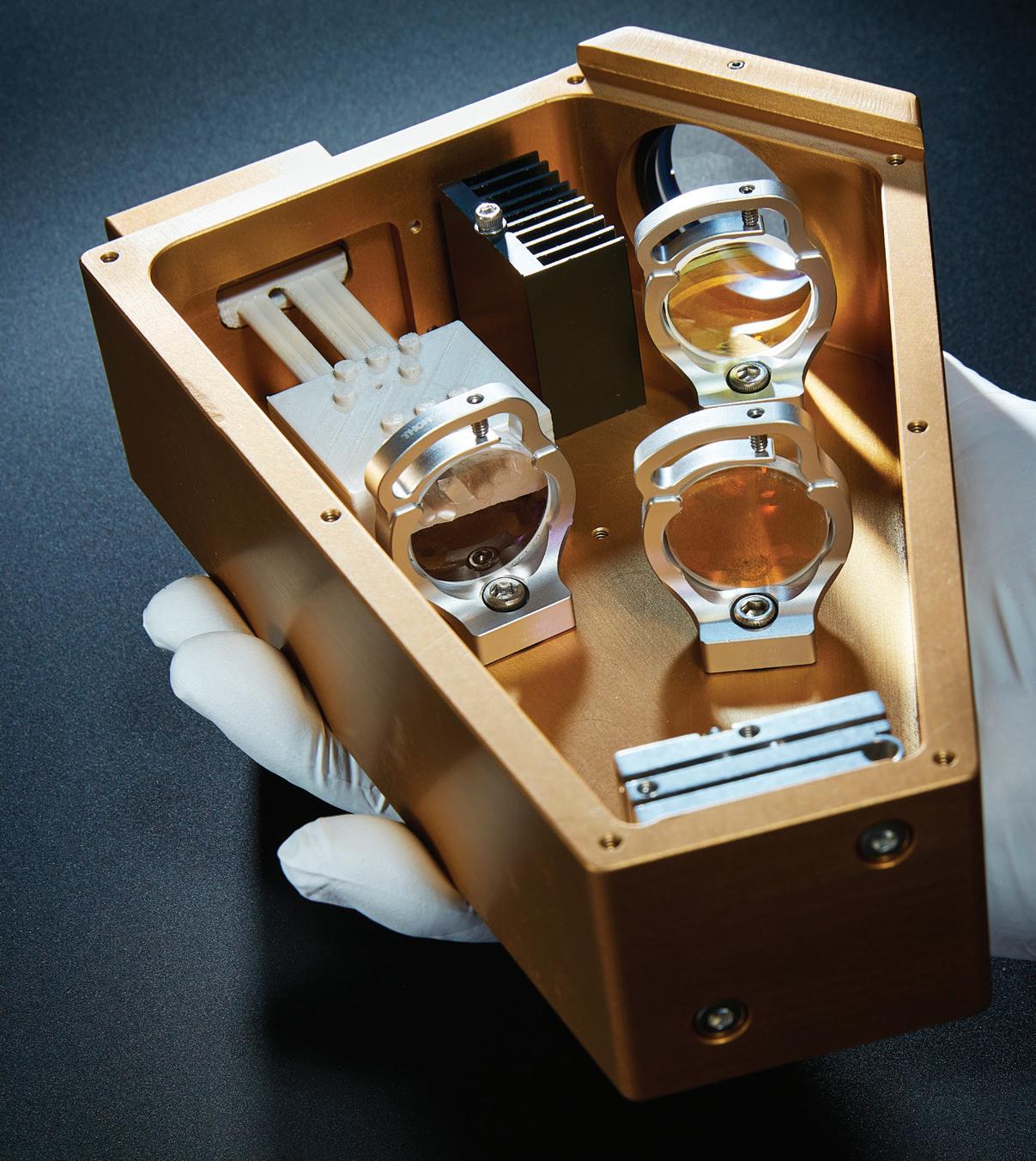

UnifyFS saves storage time for scientific applications on supercomputers
1952 — 2022



Pele simulates effects of fuel properties on turbine performance Developed

VP, Editorial Director
Paul J. Heney pheney@wtwhmedia.com @wtwh_paulheney
Editor-in-Chief Brian Buntz bbuntz@wtwhmedia.com
Associate Editor Heather Hall hhall@wtwhmedia.com
Senior Editor Rachael Pasini rpasini@wtwhmedia.com
Executive Editor Lisa Eitel leitel@wtwhmedia.com @dw_lisaeitel
Senior Editor Aimee Kalnoskas akalnoskas@wtwhmedia.com @EEWorld_Aimee
Senior Editor Miles Budimir mbudimir@wtwhmedia.com @dw_motion
Associate Editor Mike Santora msantora@wtwhmedia.com @dw_mikesantora
DIGITAL MARKETING
VP, Operations Virginia Goulding vgoulding@wtwhmedia.com @wtwh_virginia
Digital Marketing Coordinator Emily Gillespie egillespie@wtwhmedia.com @wtwh_emily
CREATIVE SERVICES & PRINT PRODUCTION
VP, Creative Services Matthew Claney mclaney@wtwhmedia.com @wtwh_designer
Art Director Eric Summers esummers@wtwhmedia.com
Director, Audience Development Bruce Sprague bsprague@wtwhmedia.com
PRODUCTION SERVICES
Customer Service Manager Stephanie Hulett shulett@wtwhmedia.com
Customer Service Representative Tracy Powers tpowers@wtwhmedia.com
Customer Service Representative JoAnn Martin jmartin@wtwhmedia.com
Customer Service Representative Renee Massey-Linston renee@wtwhmedia.com
Customer Service Representative Trinidy Longgood tlonggood@wtwhmedia.com
SALES
Ryan Ashdown rashdown@wtwhmedia.com 216.316.6691
Jami Brownlee jbrownlee@wtwhmedia.com 224.760.1055
Mary Ann Cooke mcooke@wtwhmedia.com 781.710.4659
Jim Dempsey jdempsey@wtwhmedia.com 216.387.1916
Mike Francesconi mfrancesconi@wtwhmedia.com 630.488.9029
Jim Powers jpowers@wtwhmedia.com 312.925.7793
LEADERSHIP
CEO & Co-Founder Scott McCafferty smccafferty@wtwhmedia.com
Publisher Courtney Nagle cseel@wtwhmedia.com

















































































































































Since 1963, the R&D 100 Awards have celebrated the world’s most groundbreaking technologies, often recognizing those born from a convergence of disciplines. The 2024 awards continue this legacy, featuring innovations from 16 countries and regions, spanning fields from materials science to AI.
For instance, there is General Atomics’ Metrology Research and Development Team, this year’s “Team of the Year,” exemplifies how the unification of scientific expertise can drive breakthroughs. Its 4Pi Integrated Metrology System, a product of combined expertise in robotics, automation, and AI, has played a role in enabling the first controlled fusion ignitions in history.
On page 9, explore the 4Pi system, a marvel of engineering that combines robotics, automation, and machine learning to examine tiny fuel capsules with sub-micron precision. You’ll meet Haibo Huang, Ph.D., the project lead and a driving force in measurement science, who shares insights on the team’s journey, the challenges they overcame, and the potential of fusion energy.
This year’s winning innovations highlight several key themes. Among them is sustainability. Sandia National Laboratories’ LDAC3 technology exemplifies this trend. LDAC3 uses specialized clays to capture carbon dioxide directly from the atmosphere at a lower cost, making this vital climate change mitigation strategy more accessible. Ames National Laboratory’s BRAWS Technology showcases a synthesis of technologies for a more sustainable future. BRAWS links battery recycling with hydrogen production, recovering valuable materials and generating clean fuel. This innovative approach exemplifies how tackling multiple challenges simultaneously—in this case, electronic waste and clean energy—can lead to powerful win-win scenarios.
Automation and AI are rapidly becoming intertwined with a range of industrial processes, driving a new era of intelligent systems. As AI technologies mature, innovators are integrating them to boost efficiency, improve safety, and address critical workforce challenges.
For example, the Taiwan Textile Research Institute (TTRI), in collaboration with AI Machinevision Corp., developed an AIpowered fabric inspection system that revamps quality control. This system uses machine learning to detect defects in real time, boosting inspection speed, accuracy, and overall product quality while minimizing human error.
Then there’s ITRI’s AI-driven miniature serpentine robot, which is driving advances in minimally invasive surgery. This tiny robot navigates autonomously within the human body, allowing surgeons to perform complex procedures with greater precision and reduced patient trauma. This innovation demonstrates AI’s potential to significantly bolster healthcare outcomes.
Material science often lies at the heart of convergent innovation, providing the building blocks for new technologies. A prime example is the Nanocrystalline Axial Flux Electric Motor developed by CorePower Magnetics and Carnegie Mellon University. This motor leverages nanocrystalline soft magnetic materials to achieve greater efficiency and power density compared to conventional motors. The innovative design reduces energy loss and allows for a smaller size, potentially impacting the development of electric vehicles and renewable energy systems.
Sandia National Laboratories has developed Self-Healing Refractory High-Entropy Alloys (RHEAs), which represent a significant development in material durability. These alloys can withstand extreme temperatures and radiation, making them wellsuited for applications in aerospace, nuclear reactors, and other demanding settings. The self-healing properties of RHEAs offer the potential to extend component lifespans, enhance safety, and improve cost-effectiveness.
MIT Lincoln Laboratory and Harvard University are helping guide the future of 3D printing with their Nanocomposite Inks. These inks allow for the creation of advanced devices with graded dielectric properties, opening up novel possibilities in electronics manufacturing, from customized antennas to electromagnetic shielding.
Portable and modular technologies are driving a powerful shift toward decentralization, enhancing both resilience and accessibility. Los Alamos National Laboratory’s MENDS system embodies this shift. This flexible, modular system decontaminates surfaces on-site, eliminating the need for large-scale infrastructure. Its portability allows rapid deployment in various settings, improving safety and reducing environmental impact.
Oak Ridge National Laboratory’s MBE-DAC system takes a similar approach, integrating carbon capture directly into building systems. This localized approach allows individual buildings to participate in emission reduction, promoting a more distributed and effective fight against climate change.
Another example of convergence comes courtesy of the University of Pittsburgh. Partnering with the National Energy Technology Laboratory and Sensible Photonics, they developed UltraSonic Photonics, a system that merges ultrasonic and photonic technologies for structural health monitoring. This integration enables real-time, autonomous flaw detection in critical infrastructure, enhancing safety and preventing catastrophic failures in pipelines, bridges, and more.
Similarly, NenoVision s.r.o.’s LiteScope 2.5 seamlessly integrates Atomic Force Microscopy (AFM) with Scanning Electron Microscopy (SEM). This powerful combination grants researchers unparalleled insights into materials, enabling simultaneous observation of surface topography and composition at the nanoscale. This multidisciplinary tool is accelerating research and development in fields like nanotechnology and biotechnology.
These examples are but a handful among many. The 2024 awards feature a wealth of innovations that demonstrate the power of interdisciplinary collaboration and knowledge sharing. Let us break down silos, forge new partnerships, and create ecosystems where ideas can flow freely and empower humanity to solve its greatest challenges.

BRIAN BUNTZ Editor, R&D World

BY BRIAN BUNTZ
It’s no wonder that a team of scientists at General Atomics won the “Team of the Year” R&D 100 Professional Award for their development of the 4Pi System. This metrology tool played a pivotal role in the historic achievement of fusion ignition at the National Ignition Facility (NIF) in December 2022. Scientists demonstrated for the first time that a controlled fusion reaction could produce more energy than it consumed — a feat long considered the “holy grail” of clean energy research, pursued since the 1940s following Nobel laureate Hans Bethe‘s research.
The 4Pi System’s ability to analyze the tiny fuel capsules used in Inertial Confinement Fusion (ICF) experiments helped pave the way for this breakthrough. Haibo Huang, Ph.D., director of the Center of Excellence for Advanced Diagnostics and Sensors at General Atomics, highlighted two specific challenges the system addressed:
First, 4Pi helped solve the wall thickness variation problem. The 4Pi System can accurately measure and map the wall thickness of fusion target capsules made of nanocrystalline diamond (HDC), which appear opaque to visible light. While X-rays can see through, it can’t measure to the nanometer sensitivity required. Huang’s team turned to mid-infrared wavelengths to accurately measure and map the wall thickness. Huang explained: “If it’s lopsided, then after the X-ray energy impinges on the surface, it’s going to drift in one direction, and that drift deprives the energy that could otherwise be used to compress the capsule to a higher temperature and pressure,” he noted. “So this is one key reason why ignition was not achieved for almost a decade.”

Second, it can detect and map surface defects. The 4Pi System can identify and quantify tiny surface defects, such as pits, on the capsule surface. These defects, even at microscopic scales, can cause instability growth during the implosion process. Huang described the problem: “Nuclear fusion is an unstable problem… There’s something called Rayleigh-Taylor instability growth, and because of that, any small imperfection in the ablator material itself will cause exponential instability growth during the implosion, injecting a spike of ablator material into the DT ice layer inside. The mixed-in material becomes so hot, it behaves like “meteors” radiating away the much needed energy, thereby quenching the ignition.”
Huang describes the impact of the instrument as “transformative.” “It can be applied back and forth. You can select the best capsule,” he said. “You can feed the information back to the shell production team so that they can improve their fabrication process. You can give the results to the PIs (principal investigators) of the experiment so they can simulate performance and predict the yield and enable them to improve their code.”
“Our team brings together a diverse range of expertise, allowing us to tackle complex challenges and innovate in ways that wouldn’t be possible individually.”

Central to the 4Pi System’s success is the team’s multidisciplinary expertise. Kurt Boehm, Ph.D., serves as the engineering project manager. He has a background in mechanical engineering and system design and translating complex physics requirements into practical specifications.
Kevin Sequoia, Ph.D., contributes as a data scientist, developing algorithms for processing the vast data sets generated by the system. His work was instrumental in identifying the best target capsules for experiments.
Pavel Lapa, Ph.D., and Masashi Yamaguchi, Ph.D., both Instrumentation physicists, combined their experience to refine instrument control systems and ensure seamless data acquisition.
“Our team brings together a diverse range of expertise, allowing us to tackle complex challenges and innovate in ways that wouldn’t be possible individually,” Huang said.
The team not only collaborated internally, it also worked with external teams extensively, sometimes at customer sites.
“Our mission and vision is to be at the nexus of comprehensive solutions for anything measurement-wise that people need,” Huang explained. “I would just say our desire is to be a one-stop shop for metrology solutions, supporting our customers to accomplish their missions.”
General Atomics operates the Department of Energy, Office of Science, DIII-D National Fusion Facility, which is unique for a private company. Huang emphasized that General Atomics is a “true scientific partner of the national labs,” investing millions annually in metrology research and target fabrication.
The partnership between General Atomics and national labs goes beyond building instruments. They also
collaborate on fundamental research. For example, Huang mentioned collaboration with National Institute of Standards and Technology (NIST) to refine X-ray fundamental parameters in support of the national program investigating how a material’s opacity changes under extreme conditions—research that has implications for both fusion energy and astrophysics.
The quest to achieve fusion ignition presented a significant challenge: the need for precise and comprehensive measurement of the inertial confinement fusion (ICF) capsules used in experiments at the National Ignition Facility (NIF). Traditional metrology methods were insufficient, as they typically involved sampling or measuring only parts of the capsule’s surface. Dr. Haibo Huang recognized this limitation early on. “Going forward, we would need to have a full-body analysis of the entire ablator capsule, not just sampling. In addition, different instruments will be used to map different properties of the capsule, and present the data on a common coordinate system to gain deeper insight.”
This realization led to the conceptualization of the 4Pi Integrated Metrology System. The name “4Pi” references the total solid angle in a sphere—symbolizing the system’s ability to analyze the entire surface area of the spherical capsules. “We want to measure the whole surface instead of doing a trace, want to quantify all imperfections inside a capsule. This led to the development of the 4Pi System,” says Huang.
The 4Pi Integrated Metrology System represents a significant advance in the field of inertial confinement fusion (ICF) research. This sophisticated platform provides full 4Pi surface coverage of ICF capsules, enabling comprehensive

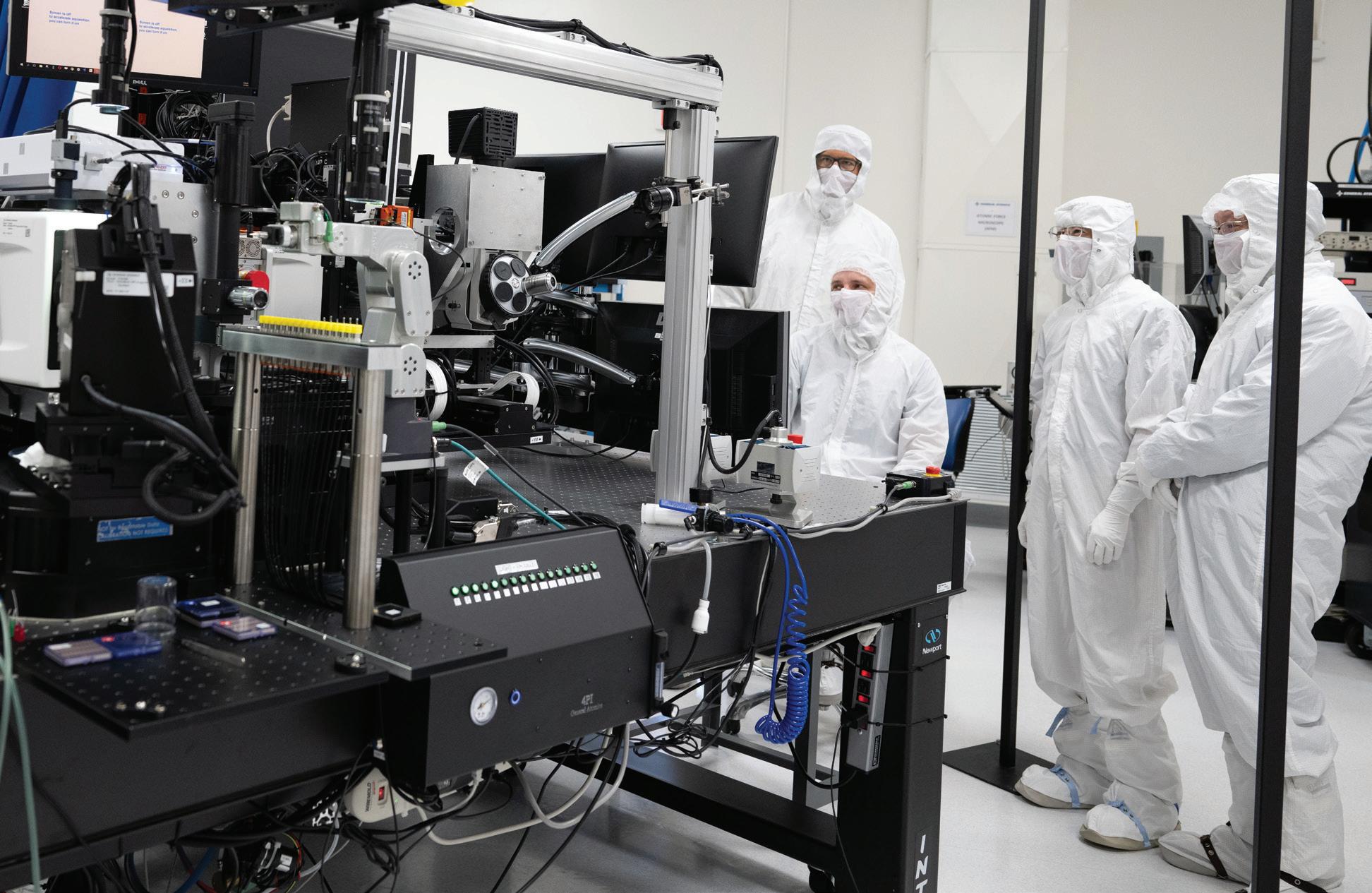
analysis not possible with traditional methods. By combining data from multiple instruments, including holography, FTIR, X-ray tomography, AFM, and microscopy, within a common (theta, phi) coordinate system, the 4Pi System allows for data fusion from various metrology tools.
Notable metrology tools integrated into the 4Pi System include the Lyncee Tec Digital Holographic Microscope for rapid full-surface defect detection in high-density carbon (HDC) capsules, a compact Fourier transform infrared spectroscopy (FTIR) for measuring wall thickness and variations in capsules, a near infrared microscope specialized in measuring thin wall thickness, a second generation digital microscope with 3-laser wavelengths for improved step height measurement and integrated AFM for detailed local defect mapping, a darkfield microscopy for inspecting interior defects on transparent capsules, and a Lasik tool for removing protruding defects or writing engineered structures onto otherwise perfect capsules.
The 4Pi system is a 12-axis platform that provides full surface coverage of ICF capsules. Each capsule is approximately 2mm in diameter—about the size of a BB— and is fabricated at sub-micron tolerances. The system achieves high precision, with 2μm positional repeatability and less than 1μm wobble control.
The most recent development is the addition of a robotic batch loader which enabled 24/7 production operation, and more than quadrupled the 4Pi metrology throughput. This allows every capsule in a production batch to be fully measured by multiple instruments and select out the very best capsule for high yield experiments. Since the robotic automation, ignition has been achieved at least four more times, at much increased tempo.
One key challenge was integrating various advanced instruments into a cohesive system capable of analyzing ICF
capsules at sub-micron tolerances. “We designed the entire post-processing software on our own because we wanted to suppress the artifacts we don’t want and maximize the signals that we care about,” Huang noted.
Looking ahead, Huang and his team are exploring new frontiers in capsule analysis. “In the future, what if we have a capsule that’s so opaque that we cannot see through it with X-ray or infrared? Can we now start to ‘hear’ it? Similar to how LIGO brings “hearing” to astronomy as opposed to “seeing” using telescopes,” Huang mused. “We are investigating ultrasound spectroscopy to “hear” the thickness of targets too opaque for photons to go through. On another front, we will apply the FTIR microscope to ‘map oxygen variations’ in Glow Discharge Polymer (GDP) capsules. According to national lab simulations, GDP has potential to outperform HDC enabling the NIF yield to increases by another ten times to 30MJ.”
The team is also investigating ways to compensate for imperfections in capsule geometry. As Huang explained, “We have been talking about the possibility… let’s say if the wall thickness is lopsided, can we align it in such a way that we can use laser to offset that lopsidedness?” This approach could potentially “achieve a spherical implosion with specific laser power distribution, as long as we know how the shell is oriented,” he said.
“Our mission is to make science fiction come true and become science. So we always think ahead and try to solve problems ahead of time,” Huang concluded.



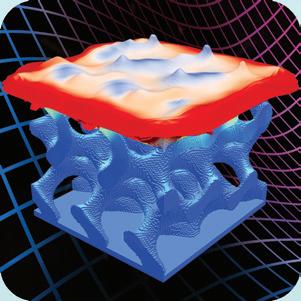



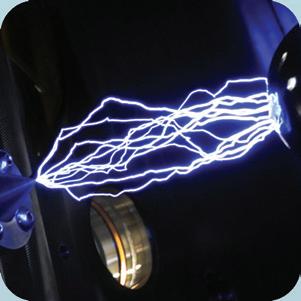







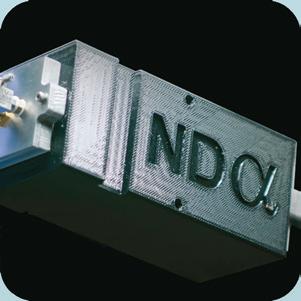












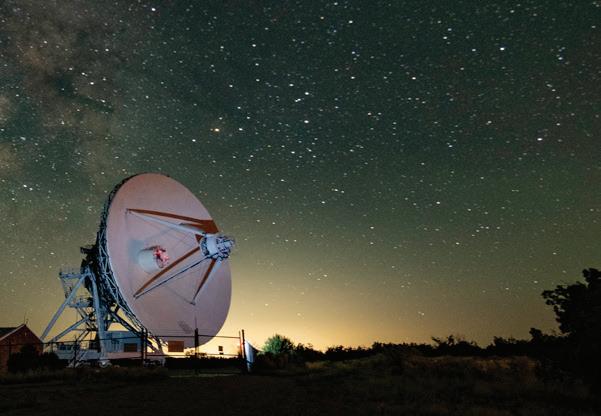













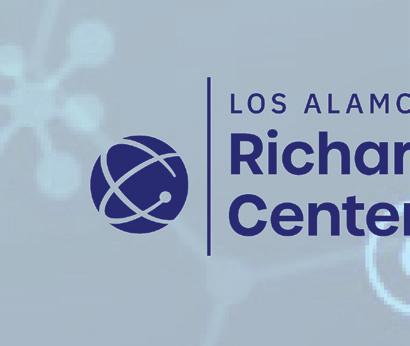





ANALYTICAL/TEST CATEGORY
Simurgh: AI-Powered Framework for Fast and Accurate Computed Tomography of Dense and Complex Components, Oak Ridge National Laboratory, ZEISS Industrial Metrology LLC
A High-Temperature, Radiation-Endurance Ultrasonic Transducer for Nuclear Harsh Environment Applications, X-wave Innovations Inc.
REBEL Concrete Strength Sensing System, WaveLogix Inc., Purdue University
Lil’ CO2: Real-Time Insights into Stem Growth and Respiration of Trees, Lawrence Berkeley National Laboratory
Key Functional Cell Identity (KFCI), Industrial Technology Research Institute (ITRI)
IT/ELECTRICAL CATEGORY
Flexible Circuit Board Superior in High-Speed and Low-Loss Data Transmission, Nano and Advanced Materials Institute, Chung Yin New Materials (H.K.) Company Limited
HARMONIE-SPS, Sandia National Laboratories
MECHANICAL/MATERIALS CATEGORY
Printable Blue and Green Light Emitters with Near-Unity Photoluminescence for Next-Generation Displays, Lawrence Berkeley National Laboratory, University of California, Berkeley
Sustainable Acrylic Polymer Emulsion for Super Dirt Repelling Waterborne Exterior Coatings, The Dow Chemical Company
NASA Langley’s Adjustable Compact Vibration Damper, NASA Langley Research Center
Reducing Risk of Fire and Advancing Safety for Urbanization through Innovative Materials, SABIC Microfabricated Optical Microbaffle for Stray Light Rejection, MIT Lincoln Laboratory
MELLT: Mechanochemical Extraction of Lithium from α-Spodumene at Low Temperatures, Critical Materials Innovation Hub/Ames National Laboratory
AIR2CO2 DAC Process, National Energy Technology Laboratory (NETL), GE Research
Heat Exchanger for Low-Conductivity Phase Change Materials, Oak Ridge National Laboratory (ORNL)
Relocatable/Resiliency Alternative Power Improvement for Distribution – Microgrid-in-a-Box (RAPID-MIB), Idaho National Laboratory, Aberham Solar
Tough and Recyclable Carbon Fiber Composites, Oak Ridge National Laboratory
NEOLAST Elastoester Polymers Enabling the Production of Sustainable NEOLAST Elastic Yarn –NEOLAST is the Future of Stretch, Celanese, Under Armour
Self-extinguishing EV Battery with In-situ Quasisolid Electrolyte, Nano and Advanced Materials Institute, Contemporary Amperex Technology Co., Limited
VC Lid Cooling technology for Kilowatt-Level Chips, VLiCo, I-CHIUN PRECISION INDUSTRY CO. LTD., Industrial Technology Research Institute (ITRI), National Tsing Hua University
LCCF-Blade: Fully Recyclable, Lightweight Wind Blade from Low-Cost Carbon Fiber and its Lightning Protection Methodologies, Oak Ridge National Laboratory
Highly Efficient Multi-Functional Nanoporous Composite Adsorbent, Industrial Technology Research Institute (ITRI)
Low Attenuation Polypropylene for Beyond-FifthGeneration (B5G) wireless communications (LAPB5G), Industrial Technology Research Institute (ITRI), Formosa Plastic Group Corporation
Interlocking Metasurfaces, Sandia National Laboratories, Texas A&M University
OTHER CATEGORY
E Ink Spectra 6, E Ink
PROCESS/PROTOTYPING CATEGORY
Short-Chained Digital Ink: shorten supply chain process with better ink effects, Taiwan Textile Research Institute (TTRI)
Lactide Technology for Polylactic acid (PLA) production - the sustainable plastic of the future, SULZER
A Revolutionary Energy-Efficient, Cost-Effective, and Environmentally Sustainable Process for Lithium-Ion Battery Recycling, Oak Ridge National Laboratory, Momentum Technologies Inc.
3S Yoga : Stretch, Smart, Safety, Taiwan Textile Research Institute
Isostatic Pressing Approaches for Conventional Liion and Solid-State Battery Technology, Oak Ridge National Laboratory, Quintus Technologies
Micro Complex Internal Pipe Coating System Technology, Metal Industries Research & Development Centre (MIRDC)
SOFTWARE/SERVICES CATEGORY
Hardware Assisted Kernel Compartmentalization (HAKC), MIT Lincoln Laboratory
Behavior, Energy, Autonomy, Mobility
Comprehensive Regional Evaluator (BEAM CORE) for Flexible Modeling of Transportation Scenarios, Lawrence Berkeley National Laboratory, National Renewable Energy Laboratory (NREL) UrbanSim Inc., SimRise LLC, University of California, Berkeley, University of California, Santa Cruz, Technical University Dortmund, Graphhopper GmbH
OpenMxP: Open-Source Mixed-Precision Computing, Oak Ridge National Laboratory
DeepHyper: Efficient Multiobjective Optimization of Learning Workflows on high performance computing systems, Oak Ridge National Laboratory, Argonne National Laboratory, Lawrence Berkeley National Laboratory, Pennsylvania State University, and Université Paris-Saclay
IRAD: Ion–Matter Interaction Calculations, Oak Ridge National Laboratory, University of Tennessee, Knoxville
National Economic Resilience Data Explorer (NERDE), Argonne National Laboratory
Cooking with Quantum Fire: Quantum-in-theLoop, National Renewable Energy Laboratory, Atom Computing Inc.
Pele Suite of Reacting Flow Simulation Codes, National Renewable Energy Laboratory, Sandia National Laboratories (SNL), Lawrence Berkeley National Laboratory (LBNL), and Oak Ridge National Laboratory (ORNL), with additional inputs from staff at Argonne National Laboratory (ANL) and Lawrence Livermore National Laboratory (LLNL)
Autonomous Air-ground Cooperative Tunnel Inspector, Hong Kong Productivity Council, Civil Engineering and Development Department (CEDD), HKSAR, and Hyder-Meinhardt Joint Venture (HMJV)
SolarAPP+: The Automated Solar Plan Review and Permitting Solution Powering Through Administrative Gridlock, National Renewable Energy Laboratory





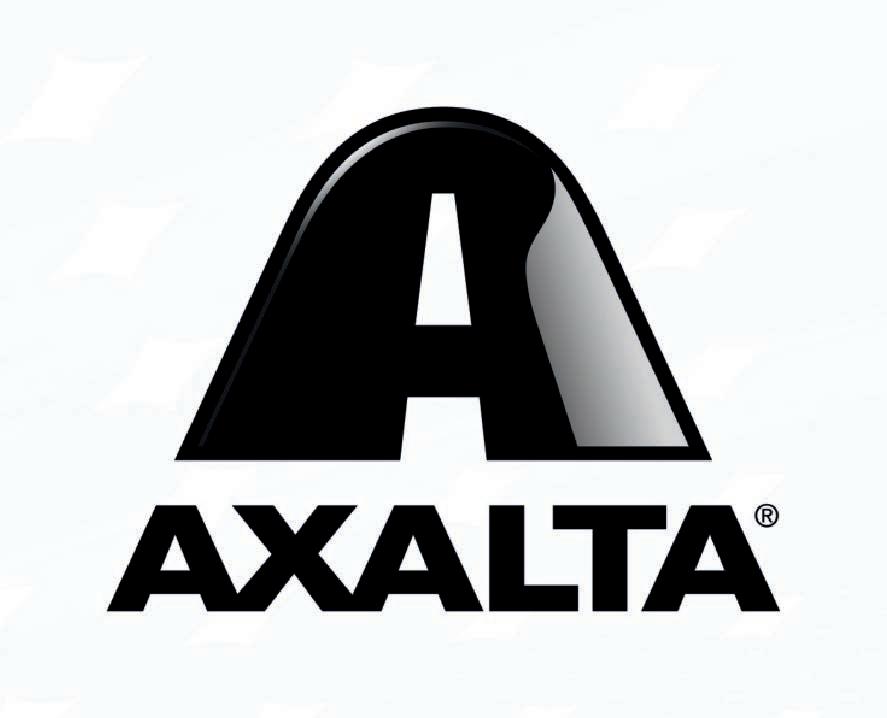






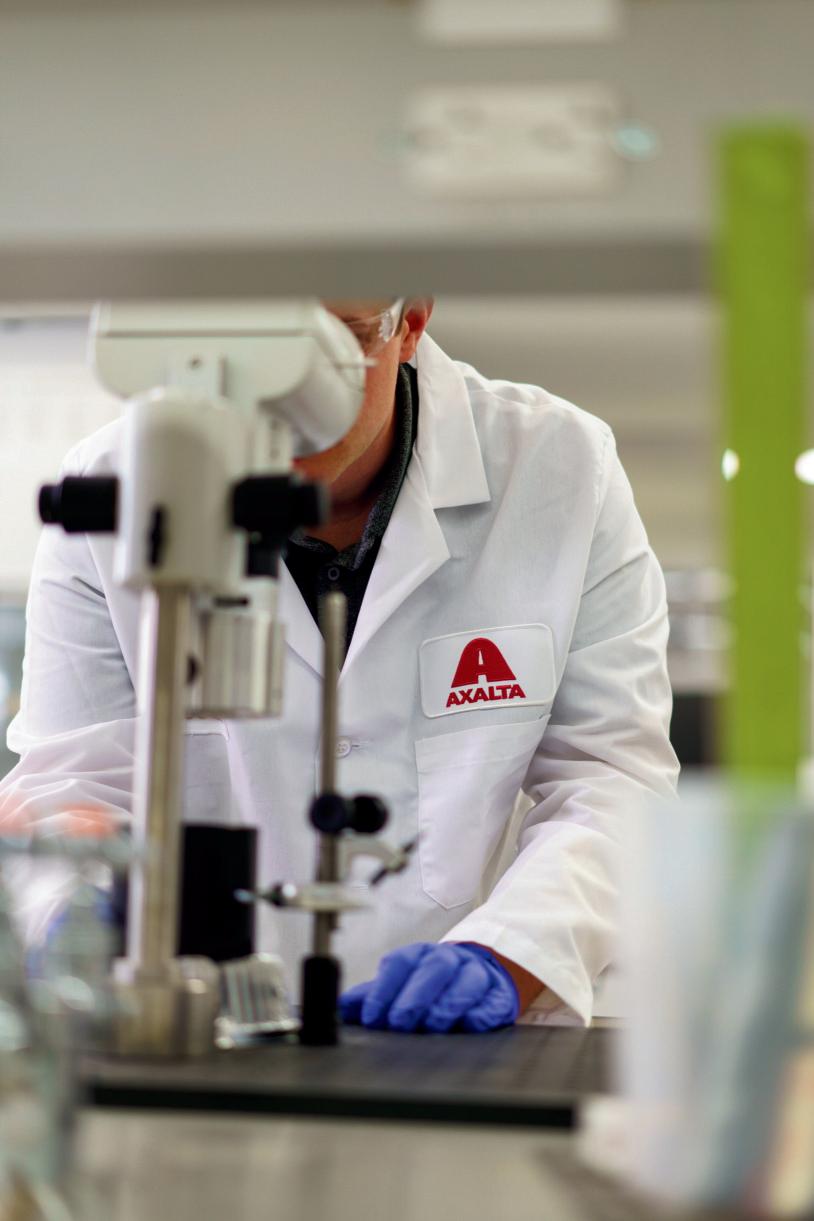



















Oxford Instruments Asylum Research Inc.
Co-developers: Université de Lyon ENS de Lyon, CNRS, Laboratoire de Physique

In the field of atomic force microscopy (AFM), there have been many incremental improvements, but relatively few new products have emerged with transformative new technologies and capabilities. Asylum Research has been in the AFM industry since the company’s founding in 1999. The MFP-3D AFM (2002) significantly advanced AFM imaging metrology accuracy through the implementation of closed-loop scanning. The Cypher AFM, a 2009 R&D 100 Award winner, was the first commercial fast scanning and the highest resolution AFM. In 2013, the blueDrive photothermal excitation dramatically improved on performance. Each of these innovations reshaped the AFM industry. The introduction of QPDI (Quantitative Phase Dynamic Imaging) on the Vero AFM offers further advances. QPDI’s AFM cantilever motion improves the accuracy of quantification and measurements. Oxford Instruments Asylum Research says that the Vero AFM with QPDI technology will redefine how AFM measurements are done in diverse fields, including piezo and ferroelectrics, 2D materials, quantum materials, and polymers.
908 Devices
MAVERICK is a platform designed specifically for biologists, using Raman spectroscopy to streamline bioprocess development and optimization. It offers out-of-the-box capabilities for real-time monitoring of variables like glucose, lactate, and biomass, all through an intuitive touchscreen interface. This platform supports automation, remote access, and compliance with cGMP standards for pharmaceutical industry applications. While Raman spectroscopy itself is not new, MAVERICK transforms its application by offering a turnkey offering that simplifies bioprocess workflows, accelerating drug development and enhancing data science efforts. Traditionally, configuring Raman spectroscopy for bioprocesses required costly equipment, extensive customization, and a steep learning curve. MAVERICK eliminates these barriers with its pre-configured system, reducing time and expense by incorporating a novel de novo model for immediate bioprocess analysis. This platform bridges the gap between research and application, enabling pharmaceutical developers to scale efficiently from pilot production to full GMP production, all while improving predictive modeling for better product quality and yield.
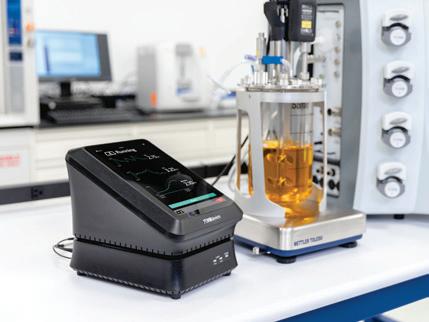
Idaho National Laboratory
SHINE is transforming neutron detection with its ability to be shaped into any size or form within minutes at room temperature, while offering detection capabilities comparable to current technologies. This material addresses the helium-3 (3He) shortage, thus aligning with national security considerations and helping prevent the entry of illicit special nuclear materials (SNM) into the U.S. SHINE’s ecofriendly, first-of-its-kind scintillation polymer gel detects thermal neutrons, with high lithium chloride (LiCl) content enhancing its neutron capture capability. The inclusion of indium phosphate quantum dots (QDs) makes the gel wavelength-tunable, increasing light yield through a larger surface area. The QD core/shell design, featuring a semiconductor core and a zinc sulfide shell, prevents self-absorption of light, offering better performance than current detection technologies.

NenoVision s.r.o.

LiteScope 2.5 represents a novel AFM-in-SEM technology, especially for nanoscale analysis. Its unique integration of AFM and SEM capabilities allows for site-specific, multimodal correlative analysis, making advanced research accessible to a broad range of industries. Key features include selfsensing probe technology, seamless SEM integration without modifications, and AI-driven image correlation, enhancing precision, efficiency, and user experience. The system is compatible with 80% of scanning electron microscopes (SEMs) from major manufacturers, allowing for rapid deployment and interchangeability. LiteScope 2.5 also features a unique load lock probe and sample exchange, protecting sensitive materials and speeding up throughput. It is thus suited for applications like battery materials research and semiconductor failure analysis. Institutions such as Arizona State University, Thermo Fisher Scientific, and CEITEC Nano Research Infrastructure have backed the LiteScope 2.5’s feature set.



MIT Lincoln Laboratory
Co-developer: MIT

Detailed knowledge of seafloor topography is valuable for applications ranging from locating missing objects and undersea resources like oil and minerals to tracking human impacts, monitoring marine life, and modeling deep-ocean currents’ climate effects. Yet, most of the Earth’s oceans remain largely unmapped. The challenge lies in the lack of technology capable of producing high-resolution, meter-scale bathymetry at scale. While ocean-mapping ships with multibeam echo sounders provide broad coverage, they only deliver low-resolution data. Mapping areas deeper than 1,000 meters, which cover 85% of the ocean, requires sending underwater vehicles near the seafloor, a method that limits coverage and adds significant costs.
The MIT Lincoln Laboratory’s sparse-aperture sonar technique bridges this gap by offering a novel approach — delivering seafloor maps at 100x the resolution of surface vessels and 50x the coverage rate of underwater vehicles.
Hemolysis accounts for up to 70% of all unsuitable specimens and can falsely elevate potassium by up to 152%. Potassium is critical in managing cardiac function. Misdiagnosis due to hemolysis can significantly affect the management of the patient, causing repeated blood draws, delays in care, or unnecessary medical interventions. Studies demonstrate hemolysis prevalence throughout acute care settings, including in whole blood measurements on blood gas analyzers where potassium is reported. Until now, hemolysis detection on entire blood has not been available on blood gas analyzers. The GEM Premier 7000 provides integrated hemolysis detection on whole blood, with no additional sample volume/time required at the point of care. Using acoustophoretic technologies with laboratory-standard photometric measurements, the system separates whole blood to determine the degree of hemolysis in a sample, simultaneously reporting blood gas, electrolytes, CO-Oximetry, and tBili results. Designed for use throughout the hospital — from the lab to acute care settings — the system can improve patient care while reducing costs associated with undetected hemolysis.
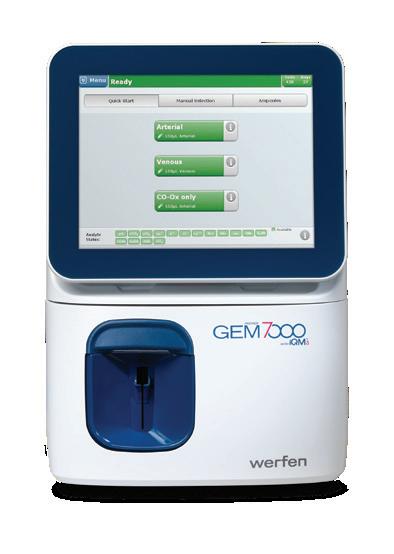
MIT Lincoln Laboratory Co-developer: MIT Department of Mechanical Engineering

Stem cell therapy holds promise for healing damaged tissues, but current scaffolds often fall short in mimicking the natural flexibility of human tissue. This can lead to cell detachment, death, and even secondary injury during recovery. Researchers have developed a new type of scaffold that addresses this limitation. The scaffold, made from bioabsorbable knitted yarns like polyglycolic acid (PGA) and polylactic acid (PLA), can be tailored to match the biomechanical properties of different types of tissues. The unique design allows the scaffold to “uncrimp” rather than stretch, preventing cell damage during motion. Tests have shown that these knitted scaffolds maintain a high cell survival rate even under significant strain, exceeding the performance of traditional scaffolds made from similar materials. This innovation holds great promise for enhancing the effectiveness of stem cell therapy, allowing for more robust healing and faster recovery.
CytoTronics Inc.
The Pixel Primo is an advanced device for multiplexed measurements at singlecell resolution. It combines unique measurements, using varying electrical field geometries and frequencies, with the highest electrode density on the market. This allows it to provide unparalleled information on cellular morphology and function, surpassing other live cell impedance devices. The Pixel Primo is the only instrument capable of multiplexing measurements. Researchers can concurrently perform electrical imaging and electrophysiological measurements, studying structure and function in electrogenic cells. Later this year, the same electrodes will measure redox potential, providing insights into cellular metabolic activity. The device’s circuits can also be configured to produce electrical signals for cell manipulation, with applications in wound healing and macromolecule delivery expected after 2024. Built with scalability in mind, the Pixel Primo is introduced with 96-well and 384-well plates, allowing flexible assay design. Later in 2024, the Pixel Octo, an 8-plate reader, will be launched, compatible with the same microplates. This enables easy scaling of assays developed on the Primo for higher-throughput applications such as screening.
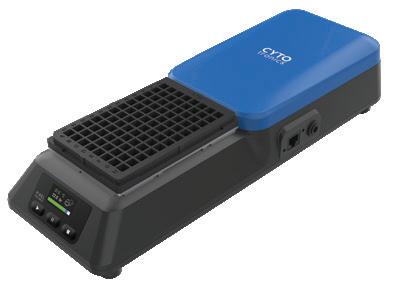
Los Alamos National Laboratory
Co-developer: Golden Engineering
Since the discovery of X-rays, there have been two classes of radiographic sources: medical below 100 kV and industrial above 1 MV. Medical sources are blind beyond a thin sheet of metal, and industrial sources are enormous and typically occupy an entire room.
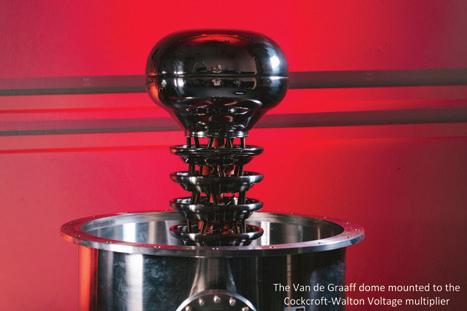
X-ray imagers, up to the present day, have not exploited the in-between “orthovoltage” (500 KV to 1 MV) spectrum. For that reason, X-rays are underused in various potential applications. Researchers at Los Alamos National Laboratory have developed PHOENIX. This X-ray source allows users to see at depth with unprecedented fine detail and leverages wellunderstood, commercial, off-the-shelf technology to generate tunable X-rays in a man-portable package powered by a drill battery and controlled with a simple on/off switch. Beyond bomb detection, its original purpose, PHOENIX can be reliably deployed in any application requiring deep vision in a portable, user-friendly package, whether in the ocean, oil fields, or industrial inspection.
Thermo Fisher Scientific
The Orbitrap Astral mass spectrometer is modernizing the field of proteomics, allowing researchers to analyze biological samples with speed and depth. This powerful instrument can identify over 8,000 protein groups from a human cell line digest in just eight minutes, dramatically increasing the scale of experiments and improving statistical power. The Orbitrap Astral combines the power of three advanced technologies: a high-resolution quadrupole mass filter, the Thermo Scientific Orbitrap mass analyzer, and the novel Thermo Scientific Astral mass analyzer. This combination allows for the accurate and rapid acquisition of high-quality, high-resolution mass data with exceptional sensitivity and broad range. The Orbitrap Astral is poised to accelerate drug discovery, treatment development, and therapeutic breakthroughs by providing faster, more comprehensive, and more accurate analysis of biological samples. This instrument has the potential to fundamentally change our understanding of complex biological systems and drive the development of new therapies and cures.

Los Alamos National Laboratory
Co-developer: United States Air Force Academy, i2 Strategic Services

A key objective for the space weather community has long been to predict space weather with the same reliability as terrestrial forecasting. The Compact Space Plasma Analyzer is a small, durable, and cost-efficient sensor designed to measure ion and electron energy, density, and temperature, as well as spacecraft charge. This data is crucial for mitigating the risks posed by the highly charged space environment, which affects satellite design, development, and operation, and can lead to dangerous differential charging and signal interference for GPS and communication systems. Its compact, rugged design offers a low SWaP-C solution that can serve as a primary payload on CubeSats or as an auxiliary payload on larger satellites. By providing affordable and widespread space-environment measurements, this sensor enhances our understanding of solar wind, magnetospheric and ionospheric processes, improves space weather forecasting, and aids in spacecraft anomaly resolution.
Elegen Corp.
Elegen has developed a custom synthetic DNA product that is changing genetic medicine development. This new technology, which uses a combination of molecular biology, chemistry, and microfluidics, produces linear, double-stranded DNA in a fraction of the time compared to traditional methods. ENFINIA DNA boasts a 20x higher accuracy and lengths up to 20,000 base pairs, exceeding the capabilities of existing synthetic DNA technologies. The process eliminates the need for cells or cloning, offering a more streamlined approach to DNA synthesis. Custom synthetic DNA is essential for developing genetic medicines, engineered crops, and synthetic biology products. Elegen’s technology has the potential to accelerate research and development in these areas by reducing the time and cost associated with DNA synthesis and scale-up. Elegen’s approach to DNA synthesis is gaining recognition, collaborating with pharmaceutical giants like GSK. This technology is poised to transform the way genetic medicines and vaccines are developed, potentially leading to faster and more efficient breakthroughs in healthcare.





Los Alamos National Laboratory

All unexpected radiological releases concern human health, economic well-being, and global stability. QUIC-DEPDOSE is an inventive tool that is the first to calculate personalized radiation doses for people downwind from a radioactive plume. Unlike other plume-modeling software, it provides far more accurate and realistic results on an average laptop within minutes. QUIC-DEPDOSE uses precise topography to model the spread and deposition of radiological particles from the scale of kilometers across a city to the scale of microns within the human respiratory tract. QUIC-DEPDOSE incorporates the effects of terrain and cityscapes, employs a building infiltration model, and includes 888 radionuclides, making it a crucial tool to guide evacuations and emergency response while minimizing harm to civilians and responders. The software is user-friendly, portable, and fast — a nonexpert can run it at an emergency site in under half an hour. QUIC-DEPDOSE is the new, necessary software tool to support policymakers, emergency planners, and emergency responders as they plan for and respond to radiological releases.
Curiosis Inc.
Pacific Northwest National Laboratory


The MSP 320 is a new digital pathology scanner designed to improve the efficiency and accuracy of cancer diagnosis. This device can scan up to 320 slides per session with exceptional resolution, ensuring every detail is captured for accurate diagnoses and improved patient outcomes. It also incorporates advanced artificial intelligence (AI) and machine learning algorithms to analyze pathological features, identifying potential issues and supporting pathologists with reliable data. This reduces human error and enhances diagnostic accuracy. The MSP 320 supports the transition towards digital health records by digitizing slides, which facilitates remote consultations, collaborative research, and secure management of vital medical information. Its scalable design ensures it can adapt to the growing needs of healthcare systems globally. The MSP 320 is a significant advancement in pathology, promising greater efficiency, improved accuracy, and ultimately, better outcomes for cancer patients.
The AXES Complete Advanced X-ray Emission Spectrometry
Solution, a new advanced X-ray emission spectrometer, is modernizing material analysis with its unique combination of high-performance spectroscopy and AI-powered imaging processing capabilities. It is the only XES spectrometer capable of simultaneously measuring up to seven emission lines, generating massive amounts of data. This data is processed in real-time by powerful software, eliminating the need for significant human intervention. The spectrometer features an innovative rotating crystal holder that can hold up to 72 different crystals, providing flexibility and versatility. This “crystal-on-demand” system allows researchers to analyze a wide range of elements simultaneously, maximizing signal strength and enabling in-situ measurements. With over 3,000 potential combinations, AXES offers the equivalent of more than 3,000 traditional XES spectrometers, making it a powerful tool for a wide range of applications in materials science, chemistry, and other fields.

A new tool combines AI with automation to examine materials at the atomic level with unprecedented speed, precision, and efficiency. Applications range from clean energy to life sciences. The patented Autonomous Electron Microscope (AutoEM) is modernizing materials research by equipping electron microscopes with “human-like reasoning.” This novel system combines machine learning software, a custom central controller, and automated data collection and analysis to rapidly pinpoint key characteristics of materials under examination. With AutoEM, researchers can now identify complex material defects that were previously impossible to observe manually, conducting studies in a fraction of the time with less human error. The results are swift, comprehensive insights into the structure of materials that can be used to develop new batteries, semiconductors, solar cells, and pharmaceuticals. This powerful tool promises to accelerate scientific discovery and innovation, leading to faster development of crucial technologies for a sustainable future.
















































The Electromagnetic Spectrum Management System (ESMS) offers a solution for controlling radio frequencies in sensitive areas. It identifies and “manages” unwanted signals, effectively silencing them while allowing authorized communications to pass through. This is achieved by removing the modulation of hostile signals, essentially rendering them unintelligible while preserving the intended data and voice communication on friendly channels. The ESMS is particularly valuable for bomb disposal technicians, allowing them to safely disable explosives without disrupting their own communications. Unlike traditional jamming methods that block all signals, ESMS selectively silences only hostile signals, ensuring safe and effective operations. This technology has numerous applications across national security, law enforcement, and even civilian sectors. From secure computing facilities to hospitals limiting cell phone usage, ESMS provides a flexible and adaptable solution for managing the electromagnetic spectrum. This paradigm shift in signal control offers a powerful new tool for ensuring safe and secure communication in a world increasingly reliant on wireless technology.


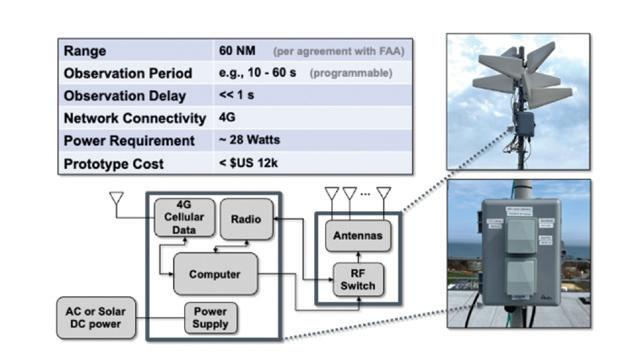
Weather forecasts are important for national safety, economic performance, and environmental management. Aircraft-derived observations (ADOs) are especially valuable, offering more impactful data for weather models than traditional sources like ground stations or satellites. ADOs help estimate current atmospheric conditions to help generate accurate forecasts. However, the current NOAA system, MDCRS, is installed on only a small percentage of aircraft, limiting the resolution and timeliness of the data. To address this gap, MIT Lincoln Laboratory developed the Portable Aircraft Derived Weather Observation System (PADWOS), which significantly increases atmospheric observation data by using Mode S Enhanced Surveillance transponders found on a larger range of aircraft. PADWOS gathers real-time data at lower altitudes and in data-sparse regions, improving weather forecast accuracy and enabling better decision support for air traffic controllers and aviation operations. With a 60-nautical-mile range and the ability to sample more aircraft, Portable Aircraft Derived Weather Observation System (PADWOS) offers a cost-effective way to deploy weather observation systems, particularly in regions lacking data, like the Midwest.

Nuclear energy is poised to reduce the world’s carbon footprint. TRIPWIRE’s breakthrough approach to managing and mitigating radiological risk is vital to building public trust in nuclear energy as a sustainable, low-carbon power source for a clean energy future. The groundbreaking radiation-monitoring system enables the safe, secure, and cost-effective long-term storage of nuclear material — any material that emits gamma radiation. It uses ruggedized scintillating fibers, the size of a pencil lead, to provide continuous, real-time monitoring of radiation levels over large areas at a fraction of the cost of conventional solutions. TRIPWIRE’s advanced methods leverage low-cost and readily available optical fibers to significantly reduce personnel exposure to potentially dangerous radiation and maintenance costs of long-term nuclear storage facilities. TRIPWIRE also has applications beyond repositories, including monitoring the natural background radiation along oil and gas pipelines, monitoring radiation at ports of entry for national security, and perimeter awareness for emergency response.
MIT Lincoln Laboratory Co-developer: Kumu Networks


In Taiwan, traffic violations, especially those involving motorcycles, remain a problem. In 2022 alone, traffic accidents resulted in 3,085 deaths and nearly 500,000 injuries, the highest in a decade. Limited police resources make traffic violation enforcement difficult, leading to a gap between issued penalties and actual infractions. Traditional enforcement methods pose safety risks to officers, with an average of one traffic officer injured in a traffic accident every nine days. To address these issues, the Institute for Information Industry (III) has developed AI-based recognition technology capable of detecting traffic violations in real time. The “Traffic Violation Catcher” application uses sensors and deep learning to automatically identify violations such as running red lights and failing to yield to pedestrians. Compared to traditional methods, AI-powered traffic enforcement reduces the workload of officers, minimizes their exposure to danger, and ensures fairness. The system operates 24/7, providing concrete evidence and facilitating penalties.
With over 18 billion wireless devices worldwide, the demand for greater bandwidth and faster data rates is increasing. In-Band Full Duplex (IBFD) technology is poised to meet this challenge by effectively managing interference from multiple sources. This allows for a more robust and deployable solution for modern networks. IBFD technology, through advanced interference mitigation techniques, supports significantly more devices, improved data rates, and extended communication range. These breakthroughs include antenna nulling to suppress self-interference, RF/ digital cancellation to reduce onboard interference, and adaptive beamforming to eliminate external interference. Real-world demonstrations have shown that the novel system supported 68x more devices, delivered data rates 10x higher, and extended communication range four times compared to current 4G LTE systems. The technology offers significant performance gains over emerging 5G NR networks. IBFD’s versatility makes it suitable for integration into smart vehicles, base stations, and handheld devices, paving the way for the next generation of connectivity and addressing the growing demands of wireless users globally.

MIT Lincoln Laboratory
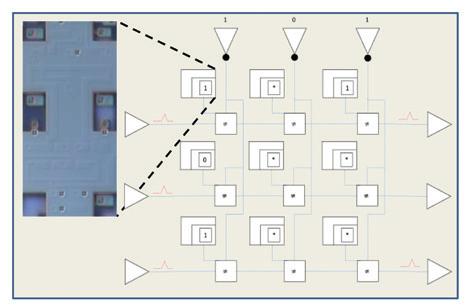
Lincoln Laboratory has developed superconductive circuits that store and compare more than two discrete states using the quantized magnetic fields from superconductive materials. This advancement enables digital logic to move beyond binary (base-2) to ternary (base-3) logic, enhancing memory throughput without increasing device count or circuit surface area. Their ternary content-addressable memories (TCAMs), based on superconducting technology, are expected to achieve high throughput with clock frequencies near 15 GHz and pattern matching throughput of 16.8 Tbps. At this speed, a superconducting TCAM could pattern match the entire digital Library of Congress (23 petabytes) in roughly three hours, nearly 30 times faster than CMOS-based TCAMs with 0.5 GHz clocks. These superconductive circuits are foundational for ultra-high-speed, lowpower digital logic, particularly for demanding pattern-matching applications.
MIT Lincoln Laboratory
Co-developer: US Army Medical Material Development Activity, US Army Research Institute of Environmental Medicine, Georgia Tech Research Institute, Odic Inc.
Heat-related injuries are the primary cause of weatherrelated loss of worker productivity, disability, and death of individuals. Most at risk are those who work outdoors (for example, construction and industrial workers, the military, first responders, and athletes). Each year, there are hundreds of heat stroke deaths in these at-risk populations worldwide. These injuries are an under-reported danger that is increasingly deadly with climate change. The HIPS system can provide accurate early warning of heat stroke several minutes before visible symptoms. The high accuracy of this system results in accurate prediction of heat injuries, with false alarms limited to <=10%, a rate found acceptable by users. The HIPS system offers a dramatic improvement over earlier technologies, estimated to have a 40% false alarm rate. Significant advantages in affordability and user acceptability have contributed to a high user acceptance and integration of HIPS into the operational environments for which it was designed, leading to a 100-fold increase in data collected that enables the development of dramatically more accurate predictive, individualized algorithms.
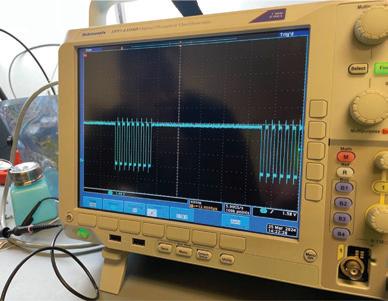
SAFE is an information barrier technology that meets a need that alternative devices do not address. It rigorously safeguards sensitive data against dissemination by automatically executing a triple-overwrite deletion without human action. This safeguard is essential in a potential violation, such as tampering with a device, removing it from a secure area, or cutting its power. Upon initial power-up, new data collection is disallowed until the independent, supercapacitor-powered deletion circuitry is fully charged and ready. While suitable for protecting private medical or financial data or proprietary industry secrets, SAFE was designed to meet the exacting standards of international nuclear arms inspections, including a critical security and longevity requirement to maintain zero energy in the system after deletion (rendering batterybased systems unusable). It allows discerning measurements of classified technology to verify treaty compliance without revealing the measurements themselves, even to the inspectors. Rather than maintaining current analog means to achieve this, SAFE enables detailed digital data analysis because data protection and erasure are inherently guaranteed.


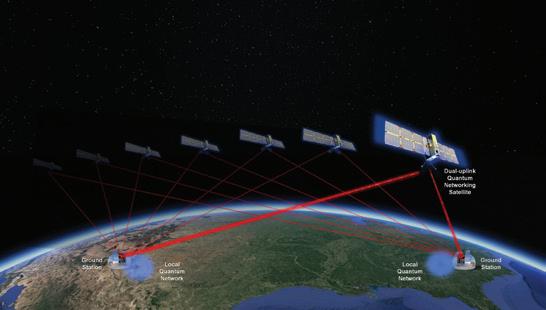
Quantum networking has the potential to advance connectivity across the globe, unlocking unprecedented capabilities in computing, sensing, and communications. To realize this potential for a range of applications, entangled photons distributed across a quantum network must arrive and interact with other photons in precisely controlled ways. The Precision Photon Synchronization System is the first to provide a low–size, weight, power, and cost solution to synchronize space-to-ground quantum networking links to subpicosecond precision. Unlike other technologies, the system performs free-space quantum entanglement distribution through a satellite without needing to locate complex entanglement sources in space. These sources are instead located on the ground, providing an easily accessible test environment that can be upgraded as new quantum entanglement generation technologies emerge. NASA seeks to employ this system in future field demonstrations that could lead to advances such as interconnected metropolitan quantum networks (a building block of a future global quantum internet) and swarms of satellites equipped with quantum sensors for precise navigation of space vehicles.


CorePower Magnetics
Co-developer: Carnegie Mellon University
The rapid shift towards electric vehicles is driving a demand for more powerful and efficient electric motors. Traditional electric motors lose a significant amount of energy due to losses in their soft magnetic cores, which are typically the bulkiest components in these systems.

CorePower Magnetics has developed a new electric motor that addresses this challenge by using nanocrystalline soft magnets, which exhibit extremely low losses at high frequencies. These materials, combined with a novel electric machine design, result in a motor that converts electrical energy into mechanical motion with significantly higher efficiency than conventional motors. This breakthrough has the potential to significantly improve the performance and range of electric vehicles. By minimizing energy losses, the new motor can increase efficiency and reduce reliance on battery power, extending driving range and enhancing the overall performance of electric vehicles. This advancement in motor technology is a key step towards a more sustainable and efficient transportation future.
MIT Lincoln Laboratory
Co-developers: Creare LLC, Lifelens LLC
Military/law enforcement personnel are often exposed to blast overpressure in training and operational settings, which can lead to short-term cognitive impairments and increased risk of conditions like anxiety and depression. The Electrooculography and Balance Blast Overpressure Monitoring System (EYEBOOM) is a wearable monitoring system that provides early warning of blast exposure risk. It combines measurements of environmental overpressures produced by weapon systems and the resulting physiological responses observed in changes in gait, balance, and eye movements. Unlike current technologies that only provide an early warning based on peak exposure levels, EYEBOOM offers continuous data that can be used in real time to adapt training and reduce injury risk. Its adoption by U.S. Special Forces units has led to changes in training practices and the possible identification of individuals at greater risk of injury. This technology could help protect our service members and law enforcement personnel from the long-term consequences of blast exposure.
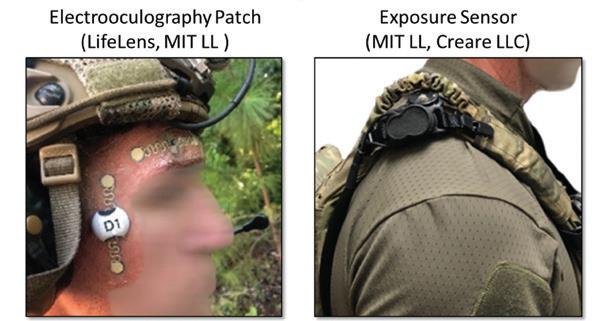
Los Alamos National Laboratory
Co-developer: Advent Technologies Holdings Inc.
Los Alamos National Laboratory (LANL) and Advent Technologies collaborated to develop Ion Pair membrane electrode assemblies (MEAs) for fuel cell-powered heavy-duty vehicles. This technology aims to improve fuel cell performance, rated power, and durability.

As part of the collaboration, Advent Technologies licensed patents from LANL and established a fuel cell research, development, and manufacturing facility in Massachusetts. The Ion Pair technology is intended to address challenges in heavy-duty vehicle electrification, where batteries face limitations and conventional fuel cells may not meet power requirements. Reported advantages of Ion Pair technology include a wider operating temperature range, increased power generation, greater tolerance to hydrogen fuel impurities, and a simplified design that may reduce costs compared to conventional fuel cells with similar power output.
Industrial Technology Research Institute (ITRI)
The rapid advancement of AI is hampered by the “memory bottleneck,” a challenge stemming from the separation of memory and processing units in the von Neumann architecture. This bottleneck is particularly pronounced in generative AI applications, where memory-intensive operations exacerbate the issue. Over the past two decades, the growth of computing power has outpaced memory bandwidth, further intensifying this challenge. Generative AI also consumes significant energy, with a recent study highlighting the high energy footprint of generating AI images. MOSAIC, a new technology, addresses this challenge by integrating a 3D DRAM hierarchy directly onto the logic chip, reducing data transfer distances and energy consumption. This approach also simplifies yield control for high-performance computing (HPC) chips, lowering costs. Powerchip Semiconductor Manufacturing Corporation (PSMC) is leading this integration, combining memory and logic technologies to enhance chip performance while minimizing costs. With multiple wafer fabrication facilities and a new 12-in. fab under construction, PSMC continues to advance semiconductor manufacturing.



Satellite communications, known as non-terrestrial networks (NTN), are bridging the gap in cellular coverage, bringing connectivity to remote areas and disaster zones. NTN technology allows devices to remain connected even when outside the range of traditional cell towers, enabling users to communicate, receive emergency warnings, and navigate. Ameba RAN, a software-defined cellular base station, is at the forefront of this technological advancement. It leverages commodity hardware and flexible software to accommodate a variety of base station types, including emerging direct-to-cell satellite communication services. Ameba RAN allows for seamless transitions between terrestrial (TN) and NTN services, ensuring uninterrupted connectivity for mobile users even in remote areas. The system supports both broadband and narrowband NTN services, providing a cost-effective solution for expanding communication coverage. Beyond emergency communication, Ameba RAN also offers a range of features for traditional TN applications, including urban communication, AR/VR, smart factory, and online gaming. Its flexible design allows for software configuration to optimize performance for specific applications, addressing the unique needs of each sector.
University of Pittsburgh
Co-developer: National Energy Technology Laboratory, Sensible Photonics
UltraSonic Photonics is a sensor system that monitors large-scale infrastructure under stress, offering unprecedented capabilities in detecting potential failures before they occur. The technology uses ultrasonic waves and optical fiber cables to “listen” for changes in the structural integrity of monitored systems, such as pipelines, nuclear canisters, and bridges. By analyzing ultrasonic signals, the system can detect cracks, corrosion, or other forms of degradation that could lead to catastrophic failures. UltraSonic Photonics combines advanced data analytics with physics-based models and machine learning algorithms, enabling the system to analyze vast amounts of data and identify potential problems with greater accuracy and earlier detection than traditional inspection methods. It can operate in challenging environments, including high temperatures and radioactive zones, helping to prevent explosions, infrastructure failures, and radioactive leaks. Its simple installation and operation make it a cost-effective solution for ensuring the safety and reliability of critical infrastructure.


Infinitum
Data centers are facing a growing energy challenge as demand for computing power, particularly for AI applications, continues to surge. According to Goldman Sachs Research, data center power demand is projected to increase by 160% by 2030. This growing demand translates into increased heat generation and, consequently, higher cooling requirements, putting a strain on energy consumption and sustainability efforts. Infinitum’s Aircore EC Motor for Data Centers is designed to tackle this challenge. This advanced motor is significantly smaller and lighter than traditional motors, requiring 66% less copper and no iron. It also boasts a 10 to 15% reduction in energy consumption and a 30% decrease in carbon emissions. Infinitum’s Aircore EC Motor is specifically designed to meet the precise horsepower, speed, and torque requirements for cooling equipment in data centers, reducing the need for oversized motors and minimizing electrical infrastructure and utility demand. The motor’s reusable components can remain in service for decades, reducing waste and contributing to a more sustainable future.

Co-developer: Johns Hopkins Applied Physics Laboratory
NASA missions with limited mass and power budgets have driven the development of innovative communication systems. In response, Johns Hopkins Applied Physics Laboratory (APL) created Frontier Radio, a low-power, low-mass, modular S/Ka-band software-defined radio that launched on NASA’s Van Allen Probes in 2012. Over the past two decades, Frontier Radio has become essential for numerous near- and deep-space missions, enabling small spacecraft to reliably transmit data and receive commands. The latest iteration, Frontier-X, commercialized in 2023, expands the reach of smaller satellites while providing enhanced connectivity and faster data transmission at a lower cost. Frontier-X represents a significant advancement in spacecraft communications technology, meeting the critical radio communications needs of numerous near- and deep-space missions. The technology has been used on multiple space missions, including the Van Allen Probes, the Parker Solar Probe, and others. Rocket Lab has licensed the technology for Frontier, enabling the creation of software-defined radios for the commercial industry.
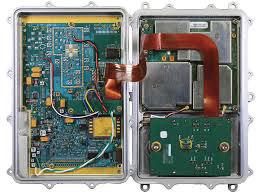


Oak Ridge National Laboratory
Co-developer: Volkswagen Group of America, Volkswagen Group Innovation, Volkswagen Group Components, Hyundai-Kia North America Technical Center

Current wireless charging technology for electric vehicles is limited by the bulky and heavy nature of high-power systems. While light-duty vehicles are limited to 11 kW charging, systems capable of 100 to 250 kW are too large for practical use, even in heavier vehicles. This new wireless charging technology development offers a solution by significantly increasing power density while reducing size and weight. This advancement achieves a surface power density of up to 1,530 kW/m2, an 8 to 10-fold increase compared to existing systems, making it a transformative leap in wireless power transfer. Furthermore, the new technology addresses concerns about electromagnetic field emission. Using a polyphase design, the system operates below international guidelines and standards, minimizing energy losses and boosting efficiency to over 95%, compared to existing systems operating between 85 and 92%. This advancement holds immense promise for the future of electric vehicles, paving the way for more powerful, efficient, and compact wireless charging solutions.

Berxel Photonics Co. Ltd.

A new 3D camera, utilizing PolarizationStructured Light (PSL), is transforming depth perception in challenging environments. Traditional 3D cameras struggle with reflective surfaces like glass, mirrors, and water, often producing inaccurate depth readings. The PSL 3D camera overcomes these limitations by leveraging the polarization properties of light. It employs highcontrast-grating vertical-cavity surface-emitting lasers (VCSELs) in the transmitter and an HCM polarizer integrated with a CMOS image sensor in the receiver. This unique design enables accurate depth measurements even in complex environments by minimizing the effects of multipath noise. This technology is poised to transform a range of applications, including robotics, logistics automation, and advanced manufacturing. Humanoid robots will be able to navigate and interact with their surroundings more effectively, while automated systems in warehouses and factories will gain the ability to handle reflective materials with greater precision. The PSL 3D camera represents a significant step forward in 3D imaging, offering enhanced accuracy and robustness in environments where traditional systems falter. This breakthrough has the potential to significantly impact the development of future robots and smart technologies.



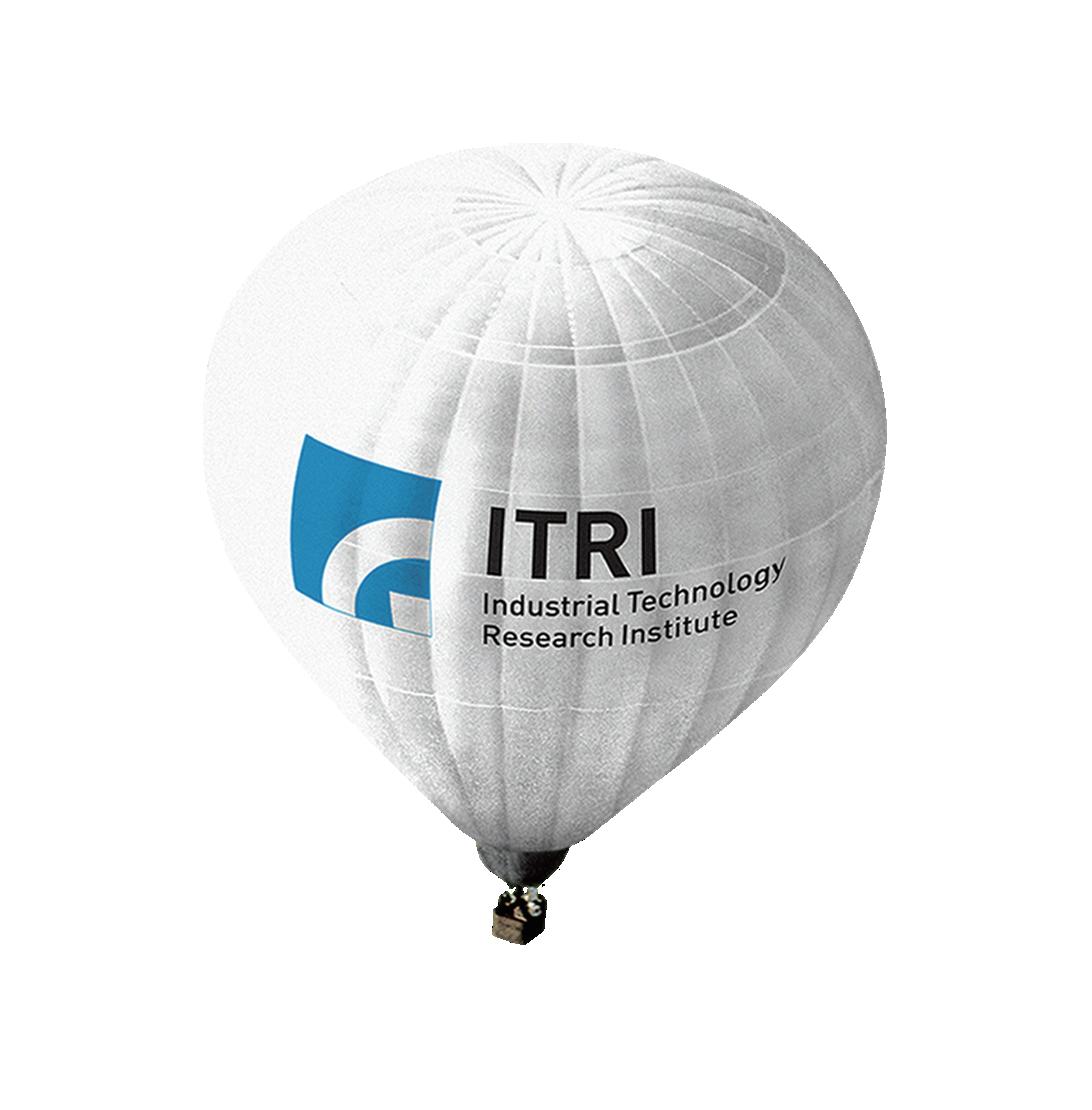

Shanghai Institute of Optics and Fine Mechanics

The automotive industry faces a challenge in balancing the need for fuel-efficient lightweight materials to improve the range of electric vehicles with solid and safe vehicles to protect passengers. Aluminum-silicon-coated press-hardened steels (PHS) are a promising solution, but these materials pose a unique challenge in laser welding. The presence of the Al-Si coating often leads to the formation of brittle delta-ferrite phases during welding, compromising the strength and integrity of the weld. Traditional methods require a costly laser ablation process to remove the coating before welding, significantly increasing manufacturing costs. PANGUJ developed a new solution eliminating the need for this expensive step. Their innovative filler wire, featuring a unique chemical composition, enables sustainable laser welding of PHS, regardless of coating thickness, strength grade, or thickness combinations. PANGUJ’s filler wire not only eliminates the need for laser ablation, but it also significantly improves weldability, reducing manufacturing costs by more than 15%, lowering energy consumption, and boosting productivity by 2-3x. This breakthrough technology has opened new possibilities for the automotive industry, with a potential market value exceeding $11.6 billion annually.
Thermo Fisher Scientific
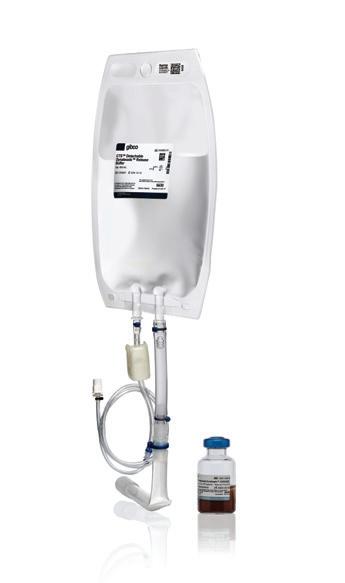
As cell therapy approvals continue to grow, new technologies and evolutions in cell therapy manufacturing are needed to get these therapies to patients. Despite the promises of the therapy class, many challenges remain within the manufacturing process that can potentially delay getting critical therapies for diseases such as cancer to needing patients. Current hurdles in cell therapy manufacturing include contamination risks, overall efficiency, scalability issues, and higher production costs. The Gibco CTS
Detachable Dynabeads offer a new, effective way for cell therapy manufacturers to actively detach Dynabeads from a target cell at any point during manufacturing, allowing greater control over the process and consistently delivering target cells with desired characteristics. CTS
Detachable Dynabeads help manufacturers alleviate pain points in flexibility, compatibility, and scalability to help bring cell therapy innovations to patients faster.
Nano and Advanced Materials Institute
Co-developer: Harvest Time Facade Limited
SABIC’s Specialties Business


NAMI’s Transparent Sun Nanocurtain offers a durable, cost-effective solution for improving energy efficiency in windows of various shapes and curvatures. The product blocks 50% of solar energy while allowing over 60% of visible light to pass through, and it reflects less than 6% of light, making it one of the top-performing window treatments globally. Unlike bulky Low-E windows, which are limited to new buildings and raise road safety concerns, or expensive window films with short lifespans that only apply to flat surfaces, the Transparent Sun Nanocurtain is easy to apply to any window and lasts over 12 years. In addition to reducing glare, it provides significant energy savings by lowering indoor temperatures caused by solar radiation, cutting electricity use, and reducing carbon emissions by 20% annually. This makes it a highly efficient and sustainable option for enhancing energy performance in both residential and commercial buildings.

SABIC’s LNP STAT-KON is fast emerging as a technology of choice for replacing metal-based bipolar plates in redox batteries for energy storage, thus enabling mass production of batteries for traditional and renewable energygenerating systems. This thermoplastic solution offers a balance of electrical and thermal conductivity, higher mechanical strength, better corrosion resistance to the electrolyte for an extended life, cost, use of available raw materials, and greater manufacturing ease than their metal-based counterparts. SABIC’s LNP STAT-KON can serve the redox battery market and other adjacent opportunities where highly electrically conducting materials can be used for applications involving metal replacement, EMI shielding, and thermal conductivity. Applications that can stand to benefit from the use of SABIC’s LNP STAT-KON technology include but are not limited to, plates of frame-and-plate heat exchangers where thermal conductivity is of critical importance, electromagnetic shields of automotive radar sensors for advanced driver-assistance systems (ADAS) applications and of printed circuit boards of electronic components where strong EMI shielding is required, and also in bipolar plates of fuel cells for electric vehicles.


The Dow Chemical Company

Every year, millions of windshields are replaced around the world, leaving behind a significant amount of waste in the form of the polyvinyl butyral (PVB) interlayer, a material responsible for keeping shattered glass together. Currently, recycling this material is a complex and costly process, often resulting in low-quality materials unsuitable for reuse. The sheer volume of PVB waste is substantial – over 175 million pounds are landfilled annually, and this doesn’t even account for PVB used in solar panels and architectural windows. A new solution developed using PARALOID Additives, a patented and commercially available technology, offers a practical and sustainable alternative to landfilling PVB. It allows for the upcycling of both virgin and recycled PVB into a variety of applications, including flooring, films, adhesives, and coatings. Further reducing environmental impact, PARALOID Additives also enable the creation of foamed PVB carpet backings, which require less material, resulting in lighter carpets for transport and installation. This innovative technology is poised to transform the way we manage PVB waste, promoting a more sustainable future.
Lawrence Berkeley National Laboratory
Axalta Coating Systems
Automotive coating company

Axalta is committed to developing sustainable and energy-efficient solutions. The company’s latest innovation, Primerless Consolidated Coating System, simplifies the traditional multi-layer painting process while enhancing both performance and sustainability. Axalta’s new system eliminates the need for a separate primer layer, achieving the desired color effects and coverage in a single basecoat application. This consolidated process streamlines the painting process, reducing cycle time by up to 10%, energy consumption by up to 25%, and reducing carbon emissions by up to 21%. The primerless paint system has been successfully launched at the Chery Anqing II plant, demonstrating its effectiveness in achieving aesthetic, sustainability, and productivity targets. It underscores Axalta’s commitment to developing smarter, more sustainable surface solutions for the automotive industry. The new system not only streamlines the painting process but also reduces the need for primer spraying equipment, further minimizing energy consumption and contributing to a more sustainable future.
Dow (Shanghai) Holding Co.

Selenium (Se) pollution, which harms aquatic ecosystems and wildlife and can be toxic in humans and animals, is found in natural water bodies worldwide. Current biological treatment to remove Se from wastewater is expensive, produces non-biodegradable sludges, has a large carbon footprint, and is sensitive to chemical and environmental limitations. Direct electrochemical reduction using gold or graphite electrodes offers advantages, but gold is too expensive, and graphite cannot achieve the Environmental Protection Agency (EPA)’s maximum contaminant level for reduction. LBNL’s Nickel-Iron Electrode effectively removes aqueous selenite from wastewater at a cost substantially lower than its competitors. It is easily manufactured and processed, has high catalytic activity and selectivity, is stable in aqueous environments, uses less energy than competing products, and creates no pollution. The Fe-Ni foil that can reduce Se(IV) concentrations to the EPA’s limit is commercially available, ensuring material scale-up. Replacing the Au electrode with Ni-Fe significantly decreases capital and operational costs, making the global adoption of this technology possible, especially in developing countries.
Coatings for cookware and grills face a tough challenge: withstanding high temperatures and repeated cleaning cycles while maintaining a smooth finish. Silicone resins offer heat resistance but lack strength and are costly, while polyesters provide good strength but struggle with heat. Silicone Modified Polyester (SMP) aims to combine the best of both worlds, but current production methods have limitations. Traditional solvent-based processes pose safety and environmental concerns, while solvent-free methods result in undesirable “sandy-like” finishes. Dow has developed DOWSIL 2080 Resin, a new, patented silicone molecule that solves these challenges. This innovative resin reacts directly with polyester in solvent-free conditions, creating a highperformance, sustainable SMP powder coating. DOWSIL 2080 Resin offers exceptional heat resistance, durability, and a smooth finish. It also provides a sustainable alternative to fluorocarbon-based coatings. This new technology promises to transform the coatings industry, providing a high-performing solution for demanding applications.
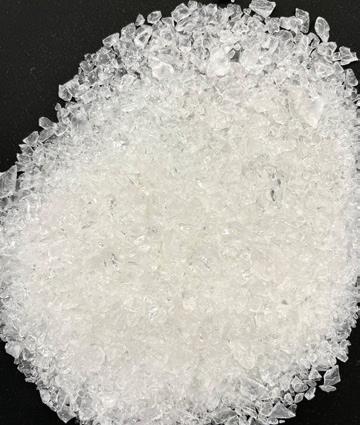

CHIMEI Corporation
Co-developer: Industrial Technology Research Institute (ITRI)
Industrial Technology Research Institute (ITRI)


As the global polycarbonate market size increases, using captured CO2 as a chemical raw material to produce polymers has an obvious ecological advantage over conventional polymers. The development of FCO2PC technology marks a significant step forward for the chemical industry. The entire process is close-looped, zero waste, and non-toxic, and the sophisticated catalysts used effectively solve the common environmental problems in traditional methods. This technology avoids toxic chemical feedstock and recycles all solvents and wastewater, significantly reducing energy consumption and overall carbon emissions. The FCO2PC facility is cost-effective to install, and the cost of production is comparable to or lower than that of conventional polycarbonate. ITRI has shown that FCO2PC technology works and is economically beneficial on an industrial scale. FCO2PC successfully implemented the 3Rs (Reduce-Reuse-Recycle) green policy and demonstrated an exciting, practical pathway for the industry to follow.
Oak Ridge National Laboratory
Co-developer: Enginuity Power Systems (EPS)

A new 8-kW micro combined heat and power (micro-CHP) system is poised to transform energy efficiency and reduce carbon emissions in residential and commercial buildings. This inventive system uses a highly efficient opposedpiston engine (OPE), which boasts 60% fewer parts than traditional engines, leading to lower manufacturing costs and increased durability. The OPE can run on a variety of fuels, including natural gas, propane, and even hydrogen, making it adaptable to both conventional and carbon-free energy sources. The system also features a sophisticated waste heat recovery system that captures heat from the engine’s exhaust and coolant to provide hot water, further increasing its overall efficiency. This micro-CHP system achieves 93% overall and up to 35.2% fuel-toelectricity efficiency, surpassing the 30% limit of conventional micro-CHPs. This technology offers a cost-effective and sustainable solution for building decarbonization, potentially accelerating the adoption of micro-CHP systems in both residential and commercial settings. It also holds promise for providing energy to remote and underserved communities.
AADREMS is the first energy management system (EMS) to leverage deep reinforcement learning (DRL) for energy-saving services. The team behind AADREMS has made significant strides in accelerating DRL’s learning speed, making the technology practical for real-world applications. The system excels in managing interactions among multiple components, achieving 15 to 20% energy savings within a short period without compromising service quality. Its quick setup, plug-and-play functionality, and independent maintenance algorithm, which predicts maintenance with 93% accuracy, make it highly efficient. AADREMS also offers a demand response service, allowing for a 5% shift in power demand over an hour with minimal effort. In the AI era, AADREMS demonstrates the potential to save substantial amounts of energy through efficient processing. Its adaptability and effectiveness make it a valuable tool for businesses seeking to reduce energy consumption and contribute to a Net Zero emissions future.
Ames National Laboratory
Co-developer: Iowa State University


The Rapid thermal processing of solid-state lithium battery ceramic electrolyte materials (BRAWS) technology enables full-value recovery of materials from lithium-ion battery waste streams. It offers environmental and economic advantages by recovering lithium, graphite, cathode materials, current collectors, and separator materials from end-of-life lithium-ion batteries without harmful solvents. Unlike traditional recycling methods that rely on acids and other toxic solvents, the BRAWS technology uses water as the sole solvent. This eliminates the need for expensive and hazardous chemicals, resulting in cost savings. The process is more energy-efficient compared to conventional methods. By avoiding complex, high-energy-consuming processes, the BRAWS technology reduces operational costs. The full-value recovery of materials from lithium-battery waste ensures no valuable components are lost, which maximizes the economic benefits. The carbonnegative feature of the BRAWS technology aligns with sustainability goals and may even lead to potential carbon credits or incentives. Green hydrogen is generated, which can have additional economic value, mainly because of the growing interest in hydrogen-based energy systems.


Industrial Technology Research Institute (ITRI)
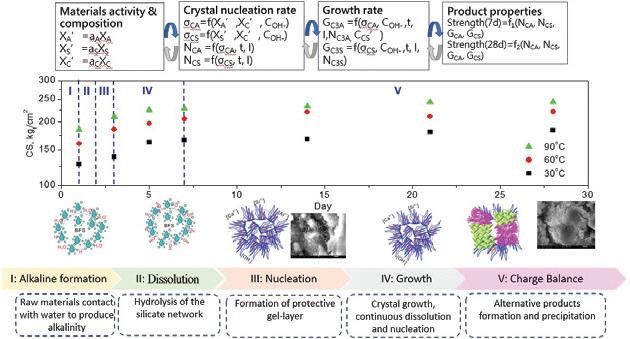
AI-LCGC technology is a significant contribution to the concrete industry. It’s the only technology that uses 100% recycled SCMs with NO clinker while retaining concrete properties. AI-LCGC concrete reduces CO2 emissions by 70 to 90% without clinker aligning with the Net Zero Emissions by 2050 scenario; the cement sector needs annual CO2 intensity declines of 4% through 2030. This is a big challenge to the industry, but with AI-LCGC technology, a yearly decline of 4% or more is optimistically achievable. Technology significantly impacts the global environment and has no practical value if it cannot be scaled up. AI-LCGC formulation platform has solved this long-standing, ongoing challenge. Material crystallization and nucleation growth theories cleverly introduced to the AI model raise the prediction rate accuracy to 87%, higher than the 80% the industry typically accepts. This AI formulation platform is a reliable tool for concrete suppliers to make AI-LCGC concrete on a large scale.
DuPont de Nemours Inc.
Co-developer: Lenzing Plastics GmbH & Co KG (Austria)
DuPont


DuPont’s Tyvek Trifecta, a novel building wrap, is changing the game for fire safety and building performance. This product combines three key functions — non-combustibility, weather resistance, and vapor permeability — into a single, durable, and reliable solution. Tyvek Trifecta, designed for use in residential, commercial, and mixed-use buildings, is particularly well-suited for high-rise and higher-risk structures, where fire safety and occupant protection are vital. It meets stringent fire safety requirements, meaning it does not contribute to fire spread and produces minimal smoke. The product’s unique combination of features surpasses minimum regulatory requirements, providing advanced weatherproofing performance, energy efficiency, and resistance to water, wind, snow, and dust. Tyvek Trifecta’s wider width and lighter weight simplify installation, saving time and money. Its inherent UV resistance and 25-year warranty provide long-term durability and reliability, ensuring a sustainable and futureproof building envelope.

Polartec Power Shield Pro, the latest iteration of the award-winning Polartec NeoShell (winner of the 2009 R&D 100 Award), is an expedition-grade waterproof, breathable fabric that uses non-PFAS, plant-based fiber technology. Power Shield Pro is the brand’s first “20/20” shell, boasting over 20,000 mm hydrostatic pressure (ISO 811) and over 20,000 g/ m2/24 h breathability (JIS L1088, B1), showcasing that superior weatherproof performance can be achieved through eco-engineering. This innovative fabric incorporates Softer Shell technology for Polartec’s signature stretch, drape, and durability. The Power Shield Pro’s fabric system comprises 48% Polartec Biolon nylon, a non-food source, non-GMO plant-based biomaterial. Biolon is a breakthrough, sustainable nylon alternative that leverages renewable, non-GMO plant-based inputs. While mirroring the characteristics of Nylon-6,6, considered the gold standard for nylon, Biolon boasts a 50% lower carbon footprint compared to other nylon raw material supply chains. This demonstrates that sustainable manufacturing practices do not compromise performance.
Pouch cells are quickly becoming the preferred choice for electric vehicle (EV) battery packs, offering higher energy density, improved cycling, and enhanced safety compared to traditional prismatic and cylindrical cells. However, bonding pouch cells in battery packs presents challenges. Many adhesives currently used require pretreatment of the aluminum-laminated film substrate, adding complexity, cost, and potentially hazardous materials to the assembly process. These adhesives can also lead to defects that compromise the durability and performance of the battery pack. BETAFORCE elastic structural adhesive offers a promising solution as it bonds to aluminumlaminated film substrates without requiring primers or pretreatment, simplifying the assembly process and reducing environmental impact. The material also boasts excellent elasticity, providing greater mechanical properties, durability, and crashworthiness. This translates to enhanced protection for pouch cells during vehicle operation and charging. BETAFORCE’s low viscosity and one-hour working time allow for easy processing and dispensing, further streamlining assembly and boosting efficiency. Its sustainable formulation, incorporating 30% renewable and bio-based materials, and its room temperature curing process contribute to a more environmentally friendly approach to battery pack manufacturing.

Dow Performance Silicones, division of The Dow Chemical Company (Dow Inc.)

The textile industry has long sought durable water-repellent fabrics that can withstand multiple washes and maintain performance. DOWSIL IE-9100 Emulsion, a new textile coating, addresses this challenge by offering a high-performing, sustainable solution. This emulsion provides superior water repellency that persists even after 20 home launderings, making it suitable for outdoor apparel and gear. It can be applied to a wide range of fabrics, including cotton, spandex, polyester, recycled polyester, nylon, and blends, simplifying manufacturing processes. The coating also preserves fabric color vibrancy, maintains tape adhesion, and allows for logo printing. Beyond its performance, DOWSIL IE-9100 Emulsion contributes to sustainability by extending the life of garments, reducing the need for frequent replacements. This aligns with the growing trend towards more durable, longer-lasting apparel. Its effectiveness in repelling water and resisting staining has been rigorously tested and proven to meet industry standards.


Dow Packaging & Specialty Plastics
Co-developer: Prysmian

Dow, which is also a supplier of polymer compounds for the telecommunications industry, has developed a new cable jacketing material called AXELERON DGDA-6321 BK. This advanced material addresses the growing demand for high-speed, reliable fiber optic cable networks, driven by the increasing popularity of fiber broadband access, 5G mobile networks, and hyperscale data centers. AXELERON DGDA-6321 BK is designed to improve upon traditional polyethylene-based jacketing materials, offering enhanced performance and sustainability. It exhibits significantly lower shrinkage than traditional materials, reducing stress on the optical fiber and ensuring high-quality signal transmission. The material also offers high toughness, allowing for smaller cable diameters and thinner jacket walls, suitable for dense networks. Additionally, AXELERON DGDA-6321 BK has a lower coefficient of friction, enabling faster and easier installation of fiber optic cables. These breakthroughs, coupled with the development of high-fiber density micro duct cables like Prysmian’s SiroccoHD, are transforming the way fiber optic networks are deployed. These new cable systems offer space-saving solutions, increased flexibility, and reduced installation costs, making them perfect for meeting the world’s growing connectivity needs.

Pinturas Berel S.A de C.V.
Berelex Green sets a new benchmark for eco-friendly paints, combining sustainability with improved indoor air quality. Specifically designed for poorly ventilated spaces, this advanced paint promotes healthier environments while reducing carbon emissions. Composed of 29% renewable materials, Berelex Green replaces fossil-based components, significantly lowering its carbon footprint. Its air-purifying formula sets it apart, which converts harmful formaldehyde into water vapor, effectively transforming walls into active air filters. Laboratory tests confirm Berelex Green eliminates over 93% of formaldehyde in a room and neutralizes 99.94% of viruses, including COVID-19, on contact with its dry surface.


Oak Ridge National Laboratory
Co-developer: The University of Tennessee, Knoxville
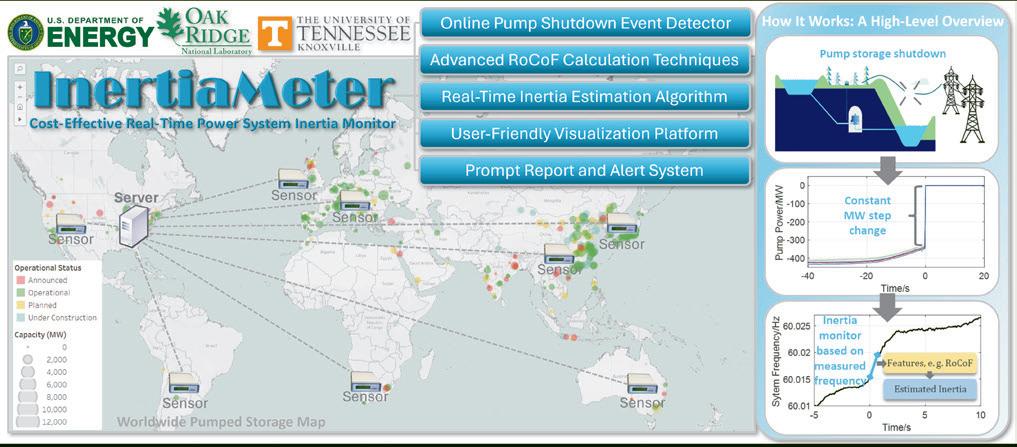
As renewable energy sources replace traditional mechanical generators, there is a growing need for accurate and cost-effective inertia monitoring to maintain power system stability. Low inertia in power systems can lead to severe frequency fluctuations, potentially causing blackouts. InertiaMeter, developed by Oak Ridge National Laboratory and the University of Tennessee Knoxville, addresses this challenge by offering real-time inertia monitoring without requiring costly hardware or intrusive signals. Using existing data from pumped storage hydropower plants, InertiaMeter accurately estimates system inertia, ensuring stability during power disturbances. This innovative tool surpasses competitors by being more cost-effective, non-intrusive, and hardware efficient. Supported by the U.S. Department of Energy’s HydroWIRES initiative, InertiaMeter has proven successful in both the Eastern and Western power grids and shows great potential for global applications. In addition to monitoring inertia, InertiaMeter includes advanced features such as real-time event detection, accurate frequency response measurements, and a user-friendly platform for operators. Its comprehensive alert system ensures grid stability by identifying issues before they lead to outages.
PacBio

PacBio’s new Onso system offers a unique approach to short-read sequencing using sequencing-by-binding chemistry. This technology delivers exceptionally low error rates, achieving a Q40+ specification – a 15-fold improvement over traditional methods. This translates to increased sensitivity for detecting rare variants, reduced sequencing requirements, and higher throughput at a lower cost per sample. Onso’s accuracy is valuable for various applications, including detecting low-level variants in cell-free DNA for early cancer detection and monitoring. It uncovers rare somatic mutations in cancers like endometrial and ovarian, leading to better diagnosis and treatment, resolving complex regions to create near-perfect reference genomes, and identifying low-level sequences in complex samples for metagenomics and CRISPR editing research. These breakthroughs have the potential to significantly impact genomics research and clinical applications, pushing the boundaries of scientific discovery and leading to better healthcare outcomes.

Reckitt Benckiser Group

For the first time, Lysol Air Sanitizer makes air sanitization widely accessible with a price point around $7. This product addresses previously unmet consumer needs and aligns with the company’s mission of promoting healthier lifestyles. By killing 99.9% of airborne viruses and bacteria, Lysol Air Sanitizer ensures ongoing protection against transmissible diseases, contributing to healthier communities. Its rigorous testing protocols establish a new benchmark in air care. The product’s launch has won recognition, with coverage from media outlets such as Forbes, Reuters, and Little Black Book. It also earned a Good Housekeeping Award. Strategic marketing efforts, including influencer partnerships and prime-time TV ads, expanded its reach. Offering an affordable, EPA-approved solution, Lysol Air Sanitizer provides an effective alternative to expensive air purification devices, encouraging the prioritization of air hygiene.
Spectrum Plastics Group: A DuPont Business
Co-developer: AtriCure

The EPi-Sense ST System is a surgical device designed to treat persistent atrial fibrillation (AF), a heart arrhythmia lasting over 12 months. It works by ablating tissue on the heart’s epicardial surface outside the heart to correct the abnormal rhythm. During the procedure, a surgeon inserts a cannula with a camera to reach the heart through a small incision. The EPi-Sense device is guided to the left atrium and uses radiofrequency (RF) energy to destroy the malfunctioning tissue. The EPi-Sense system is often used with an endocardial ablation catheter, which ablates tissue from inside the heart through a blood vessel in the groin. This “hybrid” approach combines both catheter-based and surgical methods to treat arrhythmia, especially in patients for whom anti-arrhythmic drugs (AADs) are ineffective or intolerable. The procedure aims to prevent rapid heartbeat episodes and alleviate symptoms of atrial fibrillation, though it carries some risks, making it suitable for selected patients.
Argonne National Laboratory
MIT Lincoln Laboratory
Co-developer: Harvard University


Argonne National Laboratory’s direct battery recycling process for lithium-ion battery cells is set to open new possibilities for battery recycling, cutting greenhouse gas emissions in half compared to traditional methods like pyrometallurgy and hydrometallurgy. This process also significantly reduces water, energy consumption, and waste, while recovering cathode materials. With a profitability rate 17 times higher than pyrometallurgy and six times greater than hydrometallurgy, Argonne’s method separates and reconditions battery components for efficient reuse in manufacturing. The Argonne team is building a pilot plant to push toward full commercialization and is working with industry partners like Toyota and Hyundai to demonstrate the process’s effectiveness with their batteries. This recycling approach aims to build a more robust domestic recycling infrastructure.
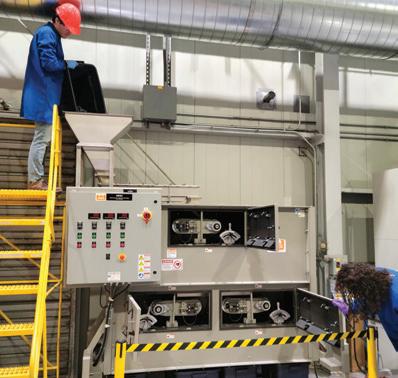
MIT Lincoln Laboratory has developed a generalized strategy for fabricating graded radio frequency (RF) devices and radiation shielding. By combining filler particles with triblock copolymers, they have created composites with a wide range of material properties, demonstrating that dielectric materials can be printed with relative permittivity values ranging from 2.2 to 24.5. Their direct-ink-writing approach creates graded dielectric structures that cannot be produced using other manufacturing techniques. This offers an alternative to traditional geometricbased approaches for impedancematching transmission lines. The system combines a “plug-and-play” materials suite with active-mixing-based 3D printing, enabling deterministic control over the geometry and composition of printed devices. The system can also incorporate conductive and/or magnetic fillers, expanding its potential applications. These capabilities are expected to accelerate the development of GRIN RF lenses, high-performance superstrates for phased arrays, and obfuscated electronic systems. The technology can be further extended to create custom radiation-shielding materials for space applications. The ability to use and protect advanced electronic components in space systems has the potential to contribute to the development of future satellites.



Thiozen’s patented chemical cycle extracts hydrogen from hydrogen sulfide, a toxic byproduct of various industries including oil and gas, ethanol production, and landfill gas. This novel technology addresses the pressing need for low-carbon hydrogen production, currently responsible for 2% of global greenhouse gas emissions. By converting a waste stream into a valuable resource, Thiozen’s process offers a significant environmental benefit. The company estimates its technology could prevent the emission of 286 million tons of CO2 annually by replacing fossil fuel-based hydrogen production. Additionally, it improves air quality and creates job opportunities while providing cost-effective hydrogen for industrial users. Thiozen’s approach stands out from current hydrogen production methods by addressing both hydrogen generation and sulfur removal. This dual benefit has garnered interest from several petroleum and natural gas companies eager to reduce their carbon footprint and create a more sustainable future.
MIT Lincoln Laboratory
Oak Ridge National Laboratory (ORNL)
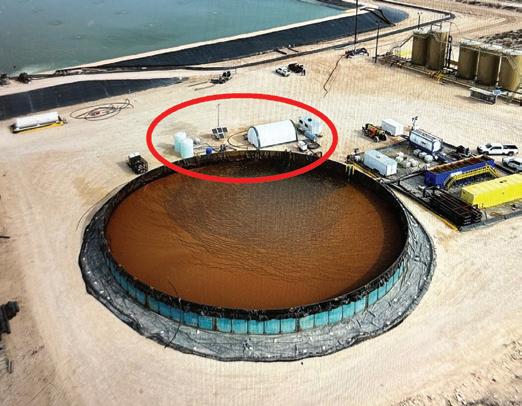
Researchers at Oak Ridge National Laboratory (ORNL) have developed a new way to extract lithium from waste liquids, potentially transforming the production of this critical battery metal. The process uses readily available aluminum hydroxide as an effective adsorbent material, which tests have shown can absorb at least five times more lithium than previously used materials. This discovery offers a significant advantage in both cost and efficiency. The new method is also unique in its ability to operate effectively over a wider pH range (5 to 11) compared to other direct lithium extraction methods. The extraction process occurs at a lower temperature of 140° C than traditional methods that require roasting mined minerals with acid or, at much higher temperatures, without acid. This new technology offers a promising solution to meet the growing demand for lithium, particularly in the U.S., where it could significantly boost lithium-ion battery production. Developing this acid-free extraction process holds the potential to reduce the environmental impact of lithium production while ensuring a sustainable supply of this critical material for the future.

MIT Lincoln Laboratory has developed a novel, transformational material system to produce functional glass composites. The system relies on three or four simple components: a liquid silicate solution, a structural filler, a fumed nanoparticle, and an optional functional additive. The curing process only requires a 250° C heat treatment instead of typical glass processing at temperatures of >1,000° C to generate stable glass structures. In addition, by changing the functional particle, glasses with unique optical, electrical, and chemical properties can be generated. In addition to the benefit of low-temperature fabrication, the significant advantage of this technique lies in its simplicity and the wide availability of its ingredients. The researchers’ low-temperature technique is poised to replace organic packaging materials in the heterogeneous integration of microelectronics. The glass can be deposited in multiple layers and processed using the existing tools of the semiconductor industry. The approach and material could potentially revamp how multilayered electronics, such as antennas, are produced.
MIT Lincoln Laboratory
MIT Lincoln Laboratory’s engineered substrates process speeds up the development of advanced silicon imaging sensors, reducing both time and cost. This innovation enables a simplified back-illumination process for small batches of detectors, eliminating the need for dedicated CMOS wafer runs. The key innovation lies in engineered substrates and a chip-level thinning process, which allows for high-quality back-passivation, lowering sensor noise and enabling uniform thinning of the detector layer to a mere 1µm thickness. This process also facilitates the development of highaspect-ratio trenches, effectively reducing optical crosstalk in silicon Geigermode avalanche photodiodes. This invention has already yielded large-format, 1µm-thin silicon detectors and has been instrumental in several detector development programs, including those for future NASA autonomous lander missions and high-dynamic-range visible imagers. By drastically reducing the time, cost, and schedule of sensor prototyping, this invention is accelerating the development of cutting-edge imaging technologies.


Oak Ridge National Laboratory (ORNL)
Crop plants are a significant source of food, bioenergy, and biomaterials. In general, crop traits are controlled by multiple genes. Multigene engineering and editing hold great promise for the improvement of crop plants. The Plant Multigene Engineering System features a novel split selectable marker system that enables the co-transformation of two vectors, each containing a set of genes to be engineered into a single plant of a specific plant species. For multigene engineering, this system has several advantages over competing technologies: higher efficiency and flexibility in a selective agent, less time, and lower cost. Furthermore, the transgenic events can be easily identified through the colors imparted by two reporter genes visible on leaves under white and ultraviolet light without expensive equipment or labor-intensive experimental characterization. The Plant Multigene Engineering System will significantly affect the economy and environmental security. Applications in plant biotechnology include genetic engineering to support climate change mitigation efforts and to improve various crop plants grown for food, bio-based fuel, biomaterials, and pharmaceuticals.

Oak Ridge National Laboratory (ORNL)
Co-developer: Holocene Climate Corporation

APEX CDR offers competitive solutions to address the existential threat of climate change. It advances DAC technologies in the following key areas: increasing CO₂ uptake rates, extending the application of DAC in a broad range of climates, and reducing temperature and energy requirements. The capital cost of the high-efficiency HiDAC contactor is less than that of existing gas-liquid contactors and has demonstrated high CO₂ uptake rates while maintaining a moderate pressure drop. APEX CDR’s performance and viability in various temperatures and climates increase the possibilities for siting locations. The energy requirements and the mild temperatures required for regeneration of the K-SAR solvent used in APEX CDR are competitive with the currently used industrial materials and solvents. The low-temperature requirement for solvent regeneration enables the use of energy from waste heat and renewable heat sources. Furthermore, the low-temperature catalytic regeneration possible with APEX CDR limits water vaporization and, therefore, reduces the regeneration requirement for K-SAR even further. A cost analysis has indicated that APEX CDR is more costeffective than other DAC technologies.
MIT Lincoln Laboratory


MIT Lincoln Laboratory’s heterogeneous chip tiling is a transformative approach, enabling the fabrication of highly protected Megachips with hundreds of chiplets having interconnects patterned through lithography. Megachip addresses two challenges in the semiconductor industry: expanding chip yield and reducing costs and the time needed to develop systems. Capable of incorporating billions of transistors, Megachip’s tiling facilitates energy-efficient systems that perform like a single chip with chip-like wiring, inter-chip planarity, and silicon content. Minimal inter-chipset spacing allows short interconnects for parallel I/O interfaces with an estimated 10 to 100x lower latency, 10x higher bandwidth, and 10 to 100x lower link energy than existing HPC modules. Megachip helps reduce latency and energy costs for real-time data processing by locating memory close to the processor. It improves AI system performance and compute density by integrating multicore chiplets that allow chip-like connectivity between GPUs, FPGAs, and AI accelerators. Because its large memory with high memory bandwidth matches compute throughput, Megachip can support considerable AI data processing. In addition, Megachip’s ability to integrate large-format detector arrays and digital ROICs could transform imaging.
Oak Ridge National Laboratory
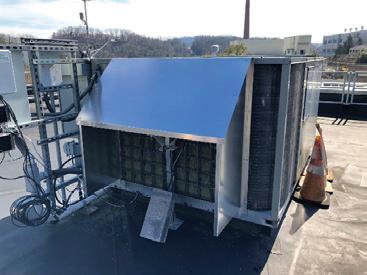
Carbon capture is imperative for mitigating climate change and aligning with the 2° C target outlined in the Paris Agreement. Nonetheless, the widespread adoption of carbon capture technology remains a formidable challenge. ORNL’s MBE-DAC offers a thoughtful solution by directly capturing CO2 from the atmosphere and building ventilation systems, using existing air-handling equipment in residential and commercial buildings. The modular approach enables seamless integration in buildings, rendering MBE-DAC a cost-effective means of carbon capture. By integrating DAC functionality into air-handling systems, MBE-DAC has the potential to substantially reduce both capital and operating costs, leveraging infrastructure already in place. This transformative technology lowers the atmospheric CO2 concentration and facilitates significant decarbonization of buildings, transforming them into carbon-capture platforms. MBE-DAC represents an unmatched, cost-effective DAC solution poised to enable widespread deployment in the fight against climate change.


Oak Ridge National Laboratory

The RTE moves the construction industry away from its reactive build-and-fix approach, bringing it on par with more productive sectors that use real-time feedback to improve speed and accuracy. The RTE consists of ingenious software that adds functions to off-the-shelf surveying hardware (for example, autonomous robotic total stations and optical targets) and decreases the system’s overall cost by approximately 60% by minimizing the hardware needed. At the job site, the RTE provides real-time feedback to workers and crane operators on a cell phone or tablet as they install prefab components and their respective connections. Simple commands on improving placement enable meeting the required tolerances without handheld measurement tools. After a component is installed, the RTE automatically updates the digital twin with the final location and suggests adjustments to the area or size of parts that are yet to be installed to reduce the accumulation of errors. With these features, the RTE reduces the installation time of prefab components at the construction site by at least 25%.
Oak Ridge National Laboratory (ORNL)
Co-developer: Lincoln Electric
Taiwan Textile Research Institute (TTRI)
Co-developer: AI MACHINEVISION CORP.
Oak Ridge National Laboratory
Co-developer: Re-Du


MedUSA, largescale multiagent wire-arc additive manufacturing, represents a fully electric process that may displace casting as the dominant manufacturing method for large, metallic near-net-shape parts. It will do so by being less carbon-intensive than casting, providing greater geometric freedom, having lower costs and lead times, and being rapidly reconfigurable. The control algorithms developed for the three-arm implementation presented here are also designed so that they can be extended to larger work volumes with more significant numbers of robots. The system also provides a means to collect substantial amounts of data about the manufacturing process that might later be leveraged for data-augmented qualification and certification workflows. Additionally, the hardware and the feedstock needed for the system are readily available and relatively inexpensive. Thus, the capital expenditure and time required to adopt the technology are low, enabling the adoption of MedUSA by enterprises of all sizes.

The AI selflearning Fabric Inspecting System developed by TTRI modernizes textile quality control by using advanced machinery and operators for an initial three-month setup period in the fabric supplier’s factory. After this phase, the system operates 24/7, replacing manual inspection with automated technology. Its optical design employs a comprehensive inspection method that detects 99% of fabric defects, accurately marking their locations both on-screen and on the fabric itself. The system uses AI to learn from defect data, continuously improving its inspection accuracy. In the next stage, TTRI provides suppliers with detailed reports on the causes of fabric defects using AI analysis, allowing them to identify problem areas and improve production quality. This approach not only increases the success rate of shipments but also enhances overall fabric quality, offering a transformative solution for the textile industry.
Facing a global crisis of plastic waste, researchers at Oak Ridge National Laboratory (ORNL) have developed a promising solution: an advanced organocatalyst that can transform various types of plastic waste, including mixed plastics, into valuable chemicals. This technology holds the potential to significantly reduce reliance on fossil fuels, decrease greenhouse gas emissions, and conserve energy. The catalyst can effectively deconstruct a wide range of plastics, including polyurethane (PU), polyamide (PA), PET, and polycarbonate (PC), along with mixed plastics. This process offers a more sustainable alternative to traditional chemical production methods, reducing greenhouse gas emissions and energy consumption by up to 95% and 94%, respectively. It also produces monomers that can be used to create new virgin plastics, promoting a circular economy and minimizing waste. This innovative invention could fundamentally change the plastic recycling industry, offering a much-needed solution to a global environmental challenge.

Taiwan Textile Research Institute (TTRI)

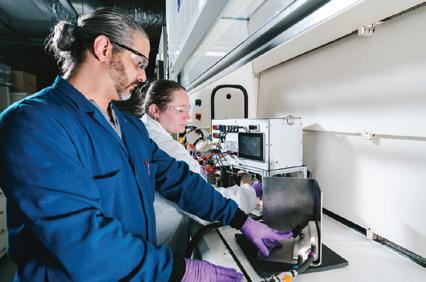
The Modular Electrochemical Nuclear Decontamination System (MENDS) is a new method for decontaminating radioactive materials and surfaces in various nuclear industries, including energy, medicine, and national laboratories. MENDS represents a significant improvement in nuclear remediation, overcoming the need for intensive manual labor and reducing secondary waste generation. MENDS also promotes worker safety by reducing the risk of ergonomic injury and radiation exposure. The Los Alamos National Laboratory-developed electrochemical flow cell enables MENDS to use a small, fixed volume of solution to decontaminate various types of equipment ranging from small nuclear thermal generators used in space exploration to large cascade gloveboxes used in the processing of radioactive materials. MENDS promises to address the most significant hazards and waste concerns associated with the nuclear industry. It also can help support green methods for recycling and recovering rare earth metals, mitigating biofouling, and enhancing adherence to protective coatings.
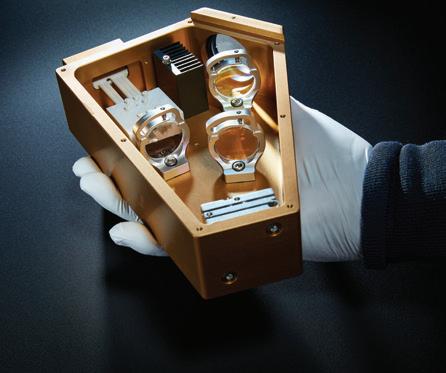
High-power lasers are essential for industrial applications, but scaling their power to hundreds of kilowatts or even megawatts has been challenging due to heat management, beam quality, and damage to optics. Spectral Beam Combining (SBC) of fiber lasers offers a promising solution. While the original EXUDE technology, introduced in 2014, made strides in this area, it faced limitations in cost, size, damage threshold, and availability. EXUDE Elite, an advancement on the original EXUDE technology, overcomes these limitations by combining fiber laser beams by transmission through a fused silica optic. This new design offers a more compact, less expensive system with a 100-fold improvement in damage threshold. EXUDE Elite has the potential to significantly broaden access to the benefits of SBC technology for industrial applications, making high-power laser systems more efficient, compact, and cost-effective. This could drive the adoption of these powerful tools in a wider range of industries, enabling faster, more precise cutting, drilling, and fabrication processes.
Mushroom leather, a sustainable alternative to traditional leather, is poised for wider adoption thanks to a new cultivation system that promises to scale up production. This innovative system, developed by a team of researchers, takes a comprehensive approach to growing mushroom leather, from strain selection to nutrient delivery. A key challenge in mushroom leather production has been the limited size of current growing trays. This new system uses a unique roll-growth method, enabling the production of large, cowhide-sized pieces of mushroom leather. This eliminates the need to stitch together smaller pieces, streamlining production and improving efficiency. The system features a specially designed growing bed, timed nutrient sprays, and a unique rolled conveyor belt system, all of which work together to optimize the growth process. This approach not only increases production volume but also minimizes waste, saves space, and reduces both time and costs. By developing this advanced cultivation system, researchers are paving the way for the wider adoption of mushroom leather, a material that promises to be both sustainable and versatile.

Taiwan Textile Research Institute (TTRI)
Co-developer: TSRC Corporation

TSRC has developed a new type of leather, called SEBS Leather. Using a modified form of the thermoplastic material Styrene-Ethylene-ButyleneStyrene (SEBS), a thermoplastic elastomer (TPE) that is flexible, strong, and has many of the same properties as rubber. This innovative material eliminates the need for traditional gluing processes, offering a more sustainable and breathable alternative to conventional leather. SEBS Leather is created using a multi-layer structure of melt-blown and spun-bonded non-woven fabrics, all made from SEBS. The process is streamlined, reducing the number of manufacturing steps from six to three. This streamlined approach also eliminates the need for dyes and solvents, making the production process more environmentally friendly. The unique structure of SEBS Leather creates a surface that closely resembles the feel of genuine leather, with the option for smooth or granular finishes. The material’s high breathability and flexibility make it ideal for a variety of applications, from clothing and accessories to upholstery and other products where a natural, durable, and sustainable material is desired.


Argonne National Laboratory
Co-developer: PulseForge Inc.

Argonne’s rapid photonic processing of solidstate lithium battery ceramic electrolyte materials technology leverages the short diffusion pathways characteristic of the nanoscale dimension present in the green body and non-equilibrium pulsed photonic processing in fractions of a second, which significantly reduces processing time and energy consumption as compared to current commercial techniques. Argonne’s process operates at room temperature. It is more than 100× faster and 10× more energy efficient than conventional methods, resulting in a greener overall process. This significant processing time reduction opens the door for scalable manufacturing of solid ceramic electrolytes. By using a roll-to-roll system, continuous fabrication of nanofiber green bodies followed by in-line photonic processing can be achieved. All of these attributes come together to create a suitable candidate for large-scale manufacturing of ceramic electrolyte materials quickly and efficiently with improvements in material quality.
Oak Ridge National Laboratory
Co-developer: Appalachian Renewal Technologies
The booming market for lithium-ion batteries is creating a surge in demand for efficient and sustainable battery production. As production scales up, large volumes of valuable scrap materials are generated. Traditional methods for recycling these materials are often energyintensive and require significant capital investment. Researchers at ORNL have developed a new, more efficient method for direct recycling of electrode materials. This solvent-based process allows for the rapid separation of electrode films from metal foils at lower temperatures, minimizing damage and preserving the original properties of the materials. The process uses a green solvent that can be reused in a closed loop, reducing waste and environmental impact. The recovered materials can be directly integrated into new batteries, saving manufacturers time and money. This approach offers a sustainable and cost-effective solution for battery manufacturers, potentially saving more than 10% in production costs and increasing their competitiveness in a rapidly growing market.
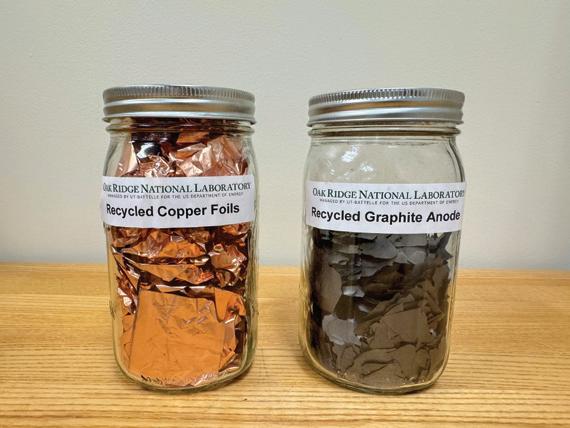
Metal Industries Research & Development Centre (MIRDC)
EHE Combustion System uses AI learning to establish a prediction model that can truly reflect the conditions of combustion furnaces and self-preheating burners. Therefore, it can intelligently and dynamically decide the switching time and mode of multiple burners following the furnace’s needs. It dynamically adjusts and increases the model’s accuracy through historical data. Because of that, the system continuously operates in its best energysaving mode under high-temperature uniformity. In addition, dynamically adjusting combustion modes and parameters can revive the energy-saving performance of industrial furnaces, especially those with heat-exchange efficiency lower than 95%. It continuously and efficiently reuses waste heat, and the operation performance of the furnace is highly visualized. The system helps manufacturers to reach the goal of CO2 emission reduction.
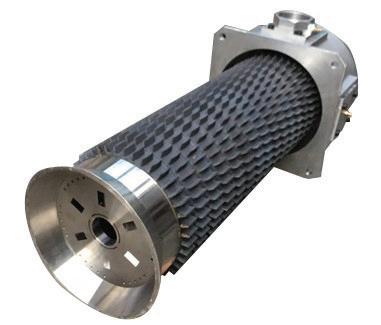


Researchers at Argonne National Laboratory invented a technique known as ultra-fast selective delamination (UFSD) to improve the recovery and reuse of critical materials from manufacturing scrap and end-of-life lithium-ion (Li-ion) batteries. UFSD uses high-frequency induction heating to delaminate electrode materials from spent Li-ion batteries. This advanced technology allows the energy-efficient, environmentally sustainable recovery of high-purity electrode materials from scrap and spent batteries. The high-frequency induction heating used in UFSD efficiently delivers electromagnetic power to places most needed for cost-effective processing. It uses 70% less energy than current state-of-the-art recycling processes and produces no hazardous byproducts. Widespread implementation and commercialization of the UFSD battery recycling process will significantly increase energy savings and reduce the production of greenhouse gases. This will help the U.S. to meet its objective of improving the recovery and reuse of critical materials in end-of-life Li-ion batteries and to achieve net-zero CO2 emissions by 2050.
Sandia National Laboratories
Co-developer: Purdue University

Climate change, driven by rising CO2 levels from fossil fuel use, is a pressing global concern. While traditional carbon capture technologies often require energy-intensive processes and extensive infrastructure, a new technology called LDAC3 offers a potentially more efficient and cost-effective solution. LDAC3 uses nanoscale expansive clay interlayers to capture CO2 directly from ambient air. Unlike existing technologies that rely on high-temperature chemical bonding, LDAC3 uses a weak chemical interaction between CO2 and water confined within the clay interlayers. This approach promises lower energy consumption and greater flexibility, making it potentially more cost-effective than existing direct air capture (DACC) technologies, which can cost upwards of $200 to 600 per ton of CO2 captured. LDAC3’s ability to capture CO2 directly from the air, rather than relying on point sources like power plants, makes it a promising technology for mitigating climate change, offering a potentially more sustainable and scalable approach to reducing atmospheric CO2 levels.
NanoSeeX Co.
Co-developer: Industrial Technology Research Institute (ITRI)

The semiconductor industry is constantly pushing the boundaries of manufacturing, producing increasingly complex wafers that require precise measurement and inspection for quality assurance. To meet this demand, a new In-Line X-Ray Critical Dimension Metrology System has been developed, offering manufacturers a more comprehensive set of tools for process control and yield assurance. This system provides a crucial advancement in measurement technology, enabling manufacturers to address manufacturing challenges and enhance product performance and quality. By implementing this technology, manufacturers can gain greater insights into their production processes, leading to improved efficiency and reduced defects. The development of this system also fuels research and development within the semiconductor industry. As manufacturers strive to meet market demands and competitive pressures, they are continually seeking out novel measurement and detection methods, fostering ongoing innovation and product advancement. The In-Line X-Ray Critical Dimension Metrology System represents a significant step forward in ensuring the quality and reliability of semiconductor products, a vital component of modern technology.



Argonne National Laboratory
Co-developer: ACT-ion Battery Technologies
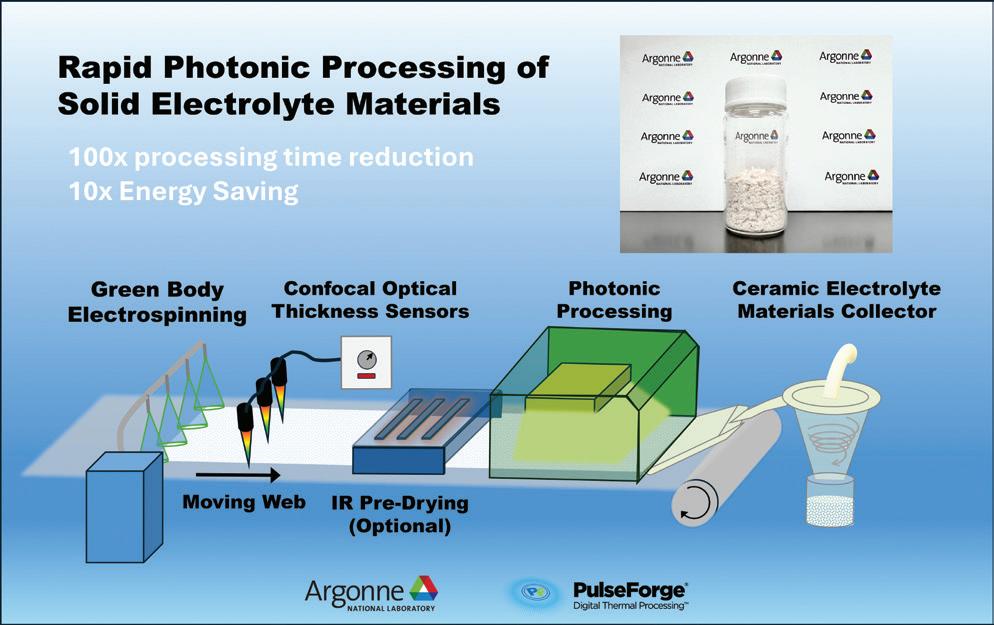
Argonne’s Hydro4Crystal platform is a novel process for producing high-performance single-crystal cathode materials that overcome cathode particle cracks leading to deterioration in lithium-ion batteries. Hydro4Crystal, a rapid, continuous supercritical hydrothermal manufacturing process, is superior to the standard process for producing polycrystalline battery cathode materials used in most lithium-ion batteries. Polycrystalline battery cathode particles experience unavoidable particle cracks, leading to decay and a drastically shortened battery lifespan. The Hydro4Crystal process fosters robust single-crystal cathode particles to overcome the drawbacks of fragile polycrystalline cathode particles, resulting in higher energy density, faster charging capability, and longer lifespan of batteries. This process guarantees lower energy consumption and speedier production by implementing single-crystal formation, lithiation, doping, and surface coating in a one-pot reaction. The revolutionary Hydro4Crystal process reduces process complexity by 50% compared to the current industry standard through its more straightforward and quicker manufacturing process. It dramatically reduces the manufacturing time from 47 to three hours, ensuring efficient and reliable performance. Hydro4Crystal is moving toward developing, scaling, and commercializing the process with ACT-ion Battery Technologies.
Sandia National Laboratories
Co-developers: Pennsylvania State, Dynetics, and the University of New Mexico
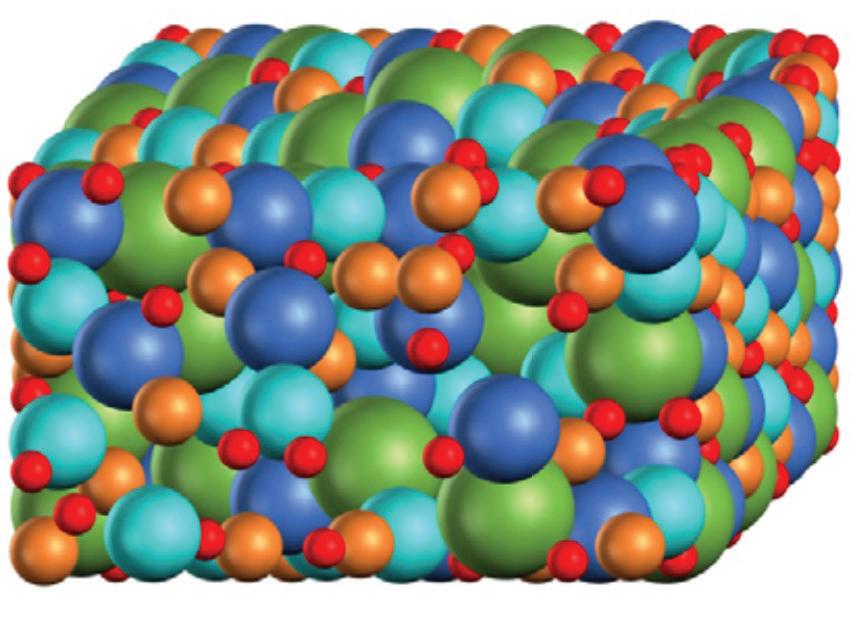
These advanced alloys, specifically in additive manufacturing and rapid prototyping, have enabled the production of larger-scale, high-quality refractory high-entropy alloys (RHEAs) with enhanced machinability and resilience to harsh environments. A significant milestone was achieved with the creation of a record-breaking 7.72 lb RHEA, measuring 10.3 in. x 8.6 in. x 0.26 in. The team also conducted a pioneering large-scale validation of self-healing capabilities under extreme irradiation of heavy gold ions, reaching up to 5 x 1015 ions/cm2. Further research demonstrated the excellence of refractory element coatings, with post-coating nanoindentation measurements revealing an impressive peak storage modulus of 327 GPa and 25 GPa hardness. Additionally, the team conducted a first-ever comprehensive set of machinability tests for RHEAs at an unprecedented length scale of up to 262 mm. The team also set a world record for corrosion resistance in chloride- and fluoride-based molten salts, demonstrating resilience up to 1,238 K.

Lawrence Livermore National Laboratory
Co-developers: Oak Ridge National Laboratory National Center for Supercomputing Applications, University of Illinois

UnifyFS solves critical input/output (I/O) bottlenecks for high-performance computing science applications. It is a temporary, user-level file system that manages I/O operations efficiently and transparently so users can compute their time-sensitive results quickly without code changes. UnifyFS leverages fast, NodeLocal storage tiers on supercomputers to conduct I/O operations many times faster than traditional methods, handling I/O requests across different storage devices and HPC systems. These features eliminate the need for timeconsuming development to optimize applications for better I/O performance; UnifyFS is the optimization. In addition, users can install UnifyFS without a system administrator’s help. It’s designed to be easy to start, stop, and transfer data to and from the system-wide file system automatically. Freely available as open source, production-ready UnifyFS makes I/O fast and easy so users can focus on their science.
Argonne National Laboratory

Internal combustion engines (ICEs) will continue to be vital to transportation and power generation for decades, especially in heavy-duty on-road, offroad, rail, and marine applications. Given the ongoing need for innovation in the space, Argonne National Laboratory’s Lagrangian-Eulerian Spark-Ignition (LESI) Model has emerged as the most accurate ignition simulation tool available for the computational fluid dynamics (CFD) simulations researchers use to simulate ICEs for R&D purposes. With LESI, Argonne researchers have enabled the capability to describe and potentially improve spark-ignition processes in ICE-powered vehicles and generators to increase energy efficiency and reduce greenhouse gas emissions. LESI combines the two most potent CFD modeling methodologies (Lagrangian and Eulerian, respectively) to depict spark-ignition processes in ICEs with high fidelity. LESI will be implemented through a non-exclusive license in Convergent Science’s CONVERGE 4 CFD software in 2024. R&D organizations use CONVERGE to simulate ICEs for transportation and power applications.
Oak Ridge National Laboratory

Machine learning (ML) algorithms analyze vast datasets, uncovering patterns and insights that enhance decision-making across various industries ranging from healthcare diagnostics to financial forecasting. However, a significant issue with ML is that the training process can be exceedingly slow, especially when dealing with large and complex datasets, which delays the implementation of applications. MAQ provides a suite of methods that are the very first to demonstrate that quantum computers can train standard machine learning models faster than classical computers can. These methods work with adiabatic quantum computers such as the D-Wave systems. MAQ enables ML practitioners to leverage the speed of quantum computing, especially on large datasets with millions of data points or features where improvements in training speed can exceed three times that of the same algorithms running on classical computers. As a result, MAQ accelerates the algorithm training process, resulting in shorter development and deployment time. Finally, MAQ implements standard machine learning algorithms and is not limited to specific applications, profoundly impacting diverse industries and societal applications.
MIT Lincoln Laboratory
Co-developer: Massachusetts Institute of Technology
Mapping human brains at multiple scales will significantly facilitate our understanding of neuron function and connectivity to treat brain disorders and accelerate drug discovery. NeuroTrALE is a scalable, active learning tool that allows users to analyze large-scale, volumetric brain microscopy images, generate segmentations with AI, and triage results through a smart device’s web browser. It addresses a significant gap in brain-mapping AI where unlabeled data may be abundant, but manual labeling is expensive. NeuroTrALE is modular, platform-agnostic, and compatible with cloud environments to perform large-scale AI and image analysis while supporting interactive user editing. It is containerized for easy installation and supports integration with downstream applications, such as NIH DANDI. The user interface of NeuroTrALE augments Google’s opensource Neuroglancer, with key custom functionality added to enable users to edit and validate algorithm-generated results at scale for iterative machine learning model training. NeuroTrALE offers web browser-based editing features that typically exist only in a desktop environment, thus streamlining semi-automated annotation to improve the accuracy and speed of machine learning-based brain mapping.




Oak Ridge National Laboratory
Co-developers: Humetrics Inc., YungShin Social Welfare Foundation, Compal Electronics Inc.

IRIS is a new programming framework designed to simplify heterogeneous computing, a landscape increasingly dominated by diverse hardware architectures. This solution addresses the need for portability, robustness, and flexibility, making it easier for developers to create applications that run efficiently on a variety of platforms. Applications using IRIS consistently outperform those using existing vendor and open-source runtimes, demonstrating its efficiency and scalability. The potential for IRIS is significant, as the demand for heterogeneous computing continues to grow. Research institutions and universities, including the University of Tsukuba (Japan) and Carnegie Mellon University, have adopted IRIS for their projects. IRIS’s comprehensive documentation, including tutorials, demos, and presentation slides, provides a valuable resource for developers looking to explore and adopt this powerful new framework. With its unique combination of portability, efficiency, and flexibility, IRIS is poised to play a crucial role in the evolving landscape of heterogeneous computing.

Traditional alpha spectroscopy, used to analyze radioactive materials, requires a lengthy and complex process. Samples must be carefully prepared and then measured in a specific, evacuated chamber, a process that can take several hours and involves special equipment and expertise. Additionally, radioactive waste is generated during the chemical preparation. A new technology called NDAlpha (NDα) is modernizing alpha spectrometry, offering a more efficient and versatile solution. NDAlpha is the first fielddeployable alpha spectrometer, capable of “point and shoot” scanning for direct, onsite analysis of nuclear materials or debris. This “nondestructive” approach eliminates the need for sample removal, providing critical information immediately for emergency response planning. The compact, portable design of NDAlpha, the size of a soda can, allows for its deployment in hazardous and high-radiation environments. While its primary application is in nuclear emergency response, NDAlpha has additional applications in nuclear site cleanup, decommissioning, process monitoring in nuclear fuel cycle facilities, radiation protection in contaminated areas, and even the rapid characterization of medical isotopes for targeted alpha therapy.
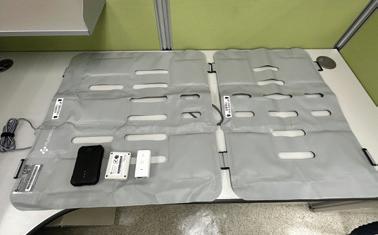
iMat, a new technology designed for elderly care, promises to transform the long-term care industry by reducing caregiver stress and improving resident safety. This smart system monitors residents’ sleep patterns and provides caregivers with real-time data, enabling proactive interventions and personalized care. iMat’s network reliability ensures 99.999% accuracy in transmitting sleep data, allowing caregivers to quickly assess a resident’s condition and address any concerns. The system’s user-friendly dashboard displays body movement and breathing rates, and color indicators, signaling a high or extremely high probability of a bed exit. This information helps caregivers optimize care schedules and reduce unnecessary room checks, leading to increased efficiency. iMat also features a predictive model that learns each resident’s unique sleep patterns within a week, providing 90-second warnings before a potential bed exit. This allows caregivers to intervene promptly, preventing falls and ensuring the safety of elders. By providing caregivers with valuable insights and real-time data, iMat empowers them to better allocate their time and energy, reducing stress and improving job satisfaction.
Lawrence Berkeley National Laboratory
Scientific facilities are facing a new challenge: experiments are becoming increasingly complex and require constant optimization. This has led to underuse of resources as human intervention becomes a bottleneck.
To address this, researchers have developed gpCAM, a powerful software tool that uses Gaussian processes to enable intelligent decision-making in experiments. gpCAM acts as an AI-driven “brain” for self-driving laboratories, accelerating scientific discovery. By analyzing data and quantifying uncertainties, gpCAM identifies the optimal next steps in an experiment, guiding researchers towards the most valuable and cost-effective path. This closed-loop system allows for continuous learning and optimization, rapidly leading to highconfidence models. gpCAM’s modular design and flexibility allow researchers to customize it to suit their specific domain knowledge and experiment objectives, making it suitable for a wide range of scientific disciplines. This powerful tool paves the way for a future of autonomous experimentation, where scientific discovery is accelerated and optimized.


Pacific Northwest National Laboratory
Co-developer: U.S. Department of Homeland Security Science & Technology Directorate
Security checkpoints at airports, stadiums, and schools are crucial for protecting people, but current screening methods often create long lines and slow down travel. This challenge has led to the development of a new security screening system called Real-Time Advanced Imaging Technology (RT-AIT). RT-AIT uses advanced millimeter-wave (MMW) imaging to detect concealed threats, like small carbon fiber knives or plastic weapons, at video frame rates, eliminating the need for passengers to stand still. This technology offers faster, more accurate screening, improving security while streamlining the process. RT-AIT is optimized for high-speed screening, with higher resolution and sensitivity than existing systems and unlike backscatter X-ray technology, it does not use ionizing radiation, making it safer for passengers. The Department of Homeland Security (DHS) Science and Technology Directorate (S&T) is supporting the development of RT-AIT through its Screening at Speed (SaS) program, aiming to improve security effectiveness while reducing wait times for travelers. This innovative technology could revamp security screening, enhancing safety and efficiency at airports, border crossings, and other high-security facilities.
Lawrence
Livermore National Laboratory
MIT Lincoln Laboratory


Los Alamos National Laboratory

Exascale supercomputers, like Frontier, Aurora, and El Capitan, are transforming scientific research by delivering unprecedented computing power. However, managing the complex memory hierarchies within these systems poses a significant challenge. Data movement between different memory and storage tiers can be inefficient due to varying access latency and bandwidth, requiring specialized interfaces for different datastores. This complexity can be a major hurdle for application developers, especially when working with complex workflows that involve multiple applications. UMap, a user-level library developed as part of the U.S. Department of Energy’s Exascale Computing Project, offers a solution. This high-performance library provides a unified memory-like interface to diverse data stores across memory-storage levels, including network connections. UMap simplifies data management by allowing applications to access data stored on SSDs or networks as if it were in main memory, streamlining data movement and reducing overhead. This flexible and configurable approach allows developers to easily manage complex data environments, accelerating scientific discovery and maximizing the power of exascale supercomputers.

The mixture deconvolution pipeline for forensic investigative genetic genealogy addresses a significant unmet need in the forensic genomics market: the ability to deconvolve DNA profiles of unknown persons mixed with DNA from one or more other person(s) to enable searching in existing genealogy databases. FIGG has emerged as a new, rapidly growing field of forensic science. However, the current use of FIGG searches is limited to single-source DNA profiles, requiring the deconvolution of any DNA mixtures before its use for long-range familial searching. Estimates indicate that approximately 50% of forensic casework samples contain low amounts of DNA, are partially degraded, or are mixtures, which can leave samples from unidentified human remains, violent crime, and matters of national security unresolved. This novel mixture deconvolution pipeline estimates the number of contributors in a DNA mixture, the percentage of DNA present from each contributor, and the sex of each contributor. It unravels (deconvolves) different DNA profiles in the mix to isolate two contributors that can be uploaded and searched in genealogy databases for investigative leads.
Los Alamos National Laboratory has developed the Fierro code, a powerful software tool designed to simulate the performance of parts, accounting for both microstructure and complex geometries, like those found in additively manufactured lattice structures. Fierro employs advanced multiscale multiphysics solvers, enabling the simulation of material behavior across different scales, from the microscopic level of the microstructure to the macroscopic level of the entire part. This capability allows for accurate prediction of material properties and performance under various conditions. Fierro’s unique multiphysics topology optimization feature allows for the design of parts that are improved for specific functions, such as maximizing strength, minimizing weight, or dissipating stress waves. This capability has significant potential for improving the design of vehicles, aerospace structures, and other critical components. By combining advanced multiscale modeling and high-performance computing, Fierro helps accelerate the development and optimization of manufacturing processes, ultimately contributing to safer, more efficient, and sustainable products.



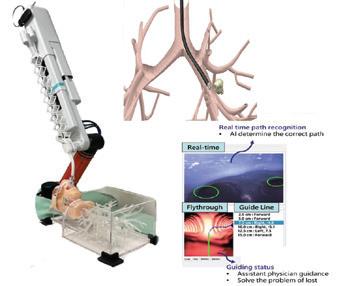
This advanced robotic endoscopy system features tactile sensing and self-navigation capabilities, enabling omnidirectional bending in constrained spaces. It provides precise in vivo navigation with real-time tactile and haptic feedback, ensuring safe force application and enhancing operational safety. Key benefits include addressing surgeon-induced variability, in vivo disorientation, unexpected infections, and imprecise localization. The modular design allows easy tool swapping for specific indications, improving efficiency and precision in surgeries. In thoracic surgery, our haptic-guided navigation significantly reduces the risk of pneumothorax, a common complication in minimally invasive therapies. Precision therapy robotic systems represent the pinnacle of medical technology, offering highly accurate and successful treatments. These systems integrate navigation technology, visual guidance, robotic manipulation, and precise placement, aiding healthcare professionals in performing intricate procedures. They are versatile and applicable across various fields, including surgery, interventional radiology, radiation therapy, and neurosurgery. They can treat conditions like cancer, cardiovascular diseases, and neurological disorders. The primary goals are to enhance treatment accuracy, ensure patient safety, and improve therapeutic outcomes.
MIT Lincoln Laboratory
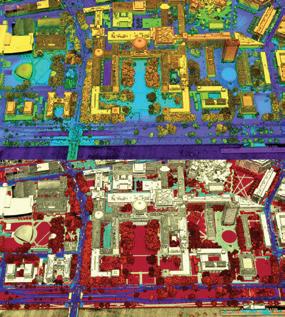
Airborne lidar, a technology used to create detailed 3D maps for various civilian and military applications, has been updated by a new machine learning framework called FocusNet. Lidar works by scanning an area with a laser, generating a massive point cloud of data. Traditionally, this data required time-consuming manual analysis by human experts. FocusNet, however, automates this process, performing accurate feature detection and semantic segmentation across different types of lidar systems, from Geiger- to linear-mode sensors. It is platform-agnostic, meaning it can be applied to data collected from a wide range of lidar systems without requiring retraining. This allows for efficient and accurate analysis of large datasets, regardless of the specific lidar technology used. The algorithm has been successfully tested on data from three continents, encompassing over 20 feature classes, making it a valuable tool for various applications, including defense operations. FocusNet represents a significant advancement in lidar data processing, enabling faster, more accurate analysis and unlocking the full potential of this powerful technology.
EGRASS, a cloud-based, publicly accessible web tool, helps assess the impact of severe weather on critical infrastructure, particularly electrical grids. It analyzes the potential failure of components like towers, transmission lines, and substations, estimating the associated risks and impact on system reliability and resilience. EGRASS uses NOAA’s Storm Events Database to simulate storm impacts on critical grid infrastructure, providing users with valuable insights for planning and preparedness. Its geospatial data features allow users to pinpoint backup power sources for critical services such as hospitals and water treatment plants. EGRASS offers a user-friendly interface with features like a 3D mapping tool for visualizing infrastructure and a risk overview page for quick assessment of asset vulnerability. Users can also simulate historical storms or create their own scenarios to understand potential impacts. With its powerful application programming interface, EGRASS integrates with other tools for comprehensive grid resilience analysis.

China Steel Corporation (CSC)
Co-developer: Industrial Technology Research Institute (ITRI)
CSC’s new Digital Twin System for Tapping Process is transforming the steel manufacturing landscape through automation and digitalization. This comprehensive system, featuring a real-time digital twin model, integrates monitoring, predictive maintenance, and process optimization to boost productivity, reduce costs, and enhance product quality. The Digital Twin model accurately replicates equipment operations in real time enabling continuous monitoring of conditions and data collection, which is then analyzed using advanced artificial intelligence algorithms. The system anticipates equipment failures before they occur, streamlining preventive maintenance, minimizing downtime, and increasing overall efficiency. The Digital Twin also plays a key role in refining CSC’s production processes, simulating every step, from raw material input to rolling, the system automates and optimizes operations, ensuring superior product quality and maximizing production capacity. This leads to increased production output while simultaneously reducing waste and improving resource use. Simulations using the Digital Twin also allow employees to better understand production equipment and procedures, improving workplace safety and boosting efficiency by ensuring staff are well-prepared for real-world scenarios.

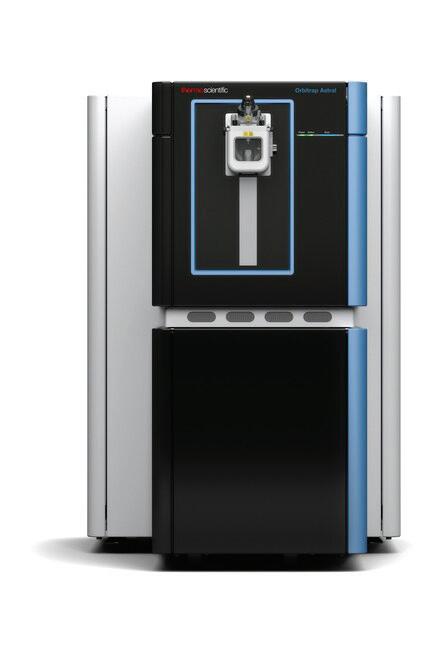
Green Tech:
Thermo Fisher Scientific
The Orbitrap Astral mass spectrometer is modernizing the field of proteomics, allowing researchers to analyze biological samples with speed and depth. This powerful instrument can identify over 8,000 protein groups from a human cell line digest in just eight minutes, dramatically increasing the scale of experiments and improving statistical power. The Orbitrap Astral combines the power of three advanced technologies: a high-resolution quadrupole mass filter, the Thermo Scientific Orbitrap mass analyzer, and the novel Thermo Scientific Astral mass analyzer. This combination allows for the accurate and rapid acquisition of high-quality, high-resolution mass data with exceptional sensitivity and broad range. The Orbitrap Astral is poised to accelerate drug discovery, treatment development, and therapeutic advancements by providing faster, more comprehensive, and more accurate analysis of biological samples. This instrument has the potential to revolutionize our understanding of complex biological systems and drive the development of new therapies and cures.
Los Alamos National Laboratory
The Modular Electrochemical Nuclear Decontamination System (MENDS) is a new method for decontaminating radioactive materials and surfaces that develop in nuclear industries such as nuclear energy, nuclear medicine, and national laboratories. MENDS represents a drastic improvement in nuclear remediation, overcoming the need for intensive manual labor and reducing secondary waste generation. MENDS also promotes worker safety by reducing the risk of ergonomic injury and radiation exposure. The Los Alamos National Laboratory-developed electrochemical flow cell enables MENDS to use a small, fixed volume of solution to decontaminate various types of equipment ranging from small nuclear thermal generators used in space exploration to large cascade gloveboxes used in the processing of radioactive materials. MENDS promises to address the greatest hazards and waste concerns associated with the nuclear industry and is poised to advance green methods for recycling and recovery of rare earth metals, mitigating biofouling, and enhancing adherence of protective coatings.

Pacific Northwest National Laboratory (PNNL)

EGRASS, a cloud-based, publicly accessible web tool, helps assess the impact of severe weather on critical infrastructure, particularly electrical grids. It analyzes the potential failure of components like towers, transmission lines, and substations, estimating the associated risks and impact on system reliability and resilience. EGRASS uses NOAA’s Storm Events Database to simulate storm impacts on critical grid infrastructure, providing users with valuable insights for planning and preparedness. Its geospatial data features allow users to pinpoint backup power sources for critical services such as hospitals and water treatment plants. EGRASS offers a user-friendly interface with features like a 3D mapping tool for visualizing infrastructure and a risk overview page for quick assessment of asset vulnerability. Users can also simulate historical storms or create their own scenarios to understand potential impacts. With its powerful application programming interface, EGRASS integrates with other tools for comprehensive grid resilience analysis.




Market Disruptor:
Los Alamos National Laboratory
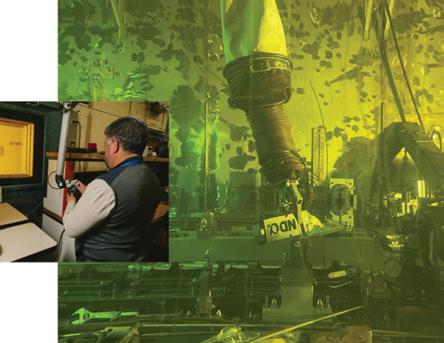
Traditional alpha spectroscopy, used to analyze radioactive materials, requires a lengthy and complex process.
Samples must be carefully prepared and then measured in a specific, evacuated chamber, a process that can take several hours and involves special equipment and expertise. Additionally, radioactive waste is generated during the chemical preparation. A new technology called NDAlpha (NDα) is modernizing alpha spectrometry, offering a more efficient and versatile solution. NDAlpha is the first field-deployable alpha spectrometer, capable of “point and shoot” scanning for direct, onsite analysis of nuclear materials or debris. This “nondestructive” approach eliminates the need for sample removal, providing critical information immediately for emergency response planning. The compact, portable design of NDAlpha, the size of a soda can, allows for its deployment in hazardous and high-radiation environments. While its primary application is in nuclear emergency response, NDAlpha has additional applications in nuclear site cleanup, decommissioning, process monitoring in nuclear fuel cycle facilities, radiation protection in contaminated areas, and even the rapid characterization of medical isotopes for targeted alpha therapy.
Corporate Social Responsibility:
Los Alamos National Laboratory
All unexpected radiological releases concern human health, economic wellbeing, and global stability. QUIC-DEPDOSE is an inventive tool that is the first to calculate personalized radiation doses for people downwind from a radioactive plume. Unlike other plume-modeling software, it provides far more accurate and realistic results on an average laptop within minutes. QUIC-DEPDOSE uses precise topography to model the spread and deposition of radiological particles from the scale of kilometers across a city to the scale of microns within the human respiratory tract. QUIC-DEPDOSE incorporates the effects of terrain and cityscapes, employs a building infiltration model, and includes 888 radionuclides, making it a crucial tool to guide evacuations and emergency response while minimizing harm to civilians and responders. The software is user-friendly, portable, and fast — a nonexpert can run it at an emergency site in under half an hour. QUIC-DEPDOSE is the new, necessary software tool to support policymakers, emergency planners, and emergency responders as they plan for and respond to radiological releases.

Corporate Social Responsibility:
Institute for Information Industry
Co-developers: Humetrics Inc., YungShin Social Welfare Foundation, Compal Electronics Inc.
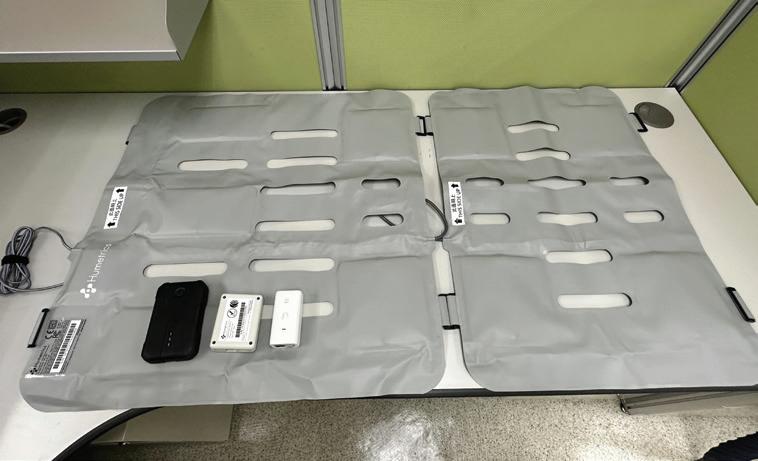
iMat, a new technology designed for elderly care, promises to transform the long-term care industry by reducing caregiver stress and improving resident safety. This smart system monitors residents’ sleep patterns and provides caregivers with real-time data, enabling proactive interventions and personalized care. iMat’s network reliability ensures 99.999% accuracy in transmitting sleep data, allowing caregivers to quickly assess a resident’s condition and address any concerns. The system’s user-friendly dashboard displays body movement and breathing rates, and color indicators, signaling a high or extremely high probability of a bed exit. This information helps caregivers optimize care schedules and reduce unnecessary room checks, leading to increased efficiency. iMat also features a predictive model that learns each resident’s unique sleep patterns within a week, providing 90-second warnings before a potential bed exit. This allows caregivers to intervene promptly, preventing falls and ensuring the safety of elders. By providing caregivers with valuable insights and real-time data, iMat empowers them to better allocate their time and energy, reducing stress and improving job satisfaction.


Pinturas Berel S.A de C.V.
Berelex Green is a novel eco-friendly paint that combines environmental responsibility with enhanced indoor air quality, setting a new standard for poorly ventilated interiors. This paint not only promotes indoor health but also reduces carbon emissions, making it an eco-friendly choice. With 29% of its composition derived from renewable sources, Berelex Green significantly lowers its carbon footprint by replacing fossil materials with sustainable alternatives. What distinguishes Berelex Green is its air-purifying capabilities. Its formula converts harmful formaldehyde present in the environment into water vapor, effectively turning walls into air-purifying filters. Tests by accredited laboratories show that Berelex Green can eliminate more than 93% of formaldehyde in a room. Additionally, it boasts antiviral properties, capable of neutralizing 99.94% of viruses, including COVID-19, upon contact with its dry surface.
Green Tech:
Oak Ridge National Laboratory
Co-developer: The University of Tennessee, Knoxville
Université de Lyon
ENS de Lyon, CNRS, Laboratoire de physique
Co-developer: Oxford Instruments Asylum Research Inc.
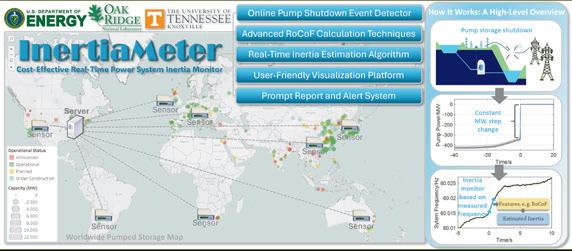
As renewable energy sources replace traditional mechanical generators, there is a growing need for accurate and costeffective inertia monitoring to maintain power system stability. Low inertia in power systems can lead to severe frequency fluctuations, potentially causing blackouts. InertiaMeter, developed by Oak Ridge National Laboratory and the University of Tennessee Knoxville, addresses this challenge by offering real-time inertia monitoring without requiring costly hardware or intrusive signals. Using existing data from pumped storage hydropower plants, InertiaMeter accurately estimates system inertia, ensuring stability during power disturbances. This innovative tool surpasses competitors by being more cost-effective, non-intrusive, and hardware efficient. Supported by the U.S. Department of Energy’s HydroWIRES initiative, InertiaMeter has proven successful in both the Eastern and Western power grids and shows great potential for global applications. In addition to monitoring inertia, InertiaMeter includes advanced features such as real-time event detection, accurate frequency response measurements, and a user-friendly platform for operators. Its comprehensive alert system ensures grid stability by identifying issues before they lead to outages.
In the field of atomic force microscopy (AFM), there have been many incremental improvements, but relatively few new products have emerged with transformative new technologies and capabilities. Asylum Research has been in the AFM industry since the company’s founding in 1999. The MFP-3D AFM (2002) significantly advanced AFM imaging metrology accuracy through the implementation of closed-loop scanning. The Cypher AFM, a 2009 R&D 100 Award winner, was the first commercial fast scanning and the highest resolution AFM. In 2013, the blueDrive photothermal excitation dramatically improved on performance. Each of these innovations reshaped the AFM industry. The introduction of QPDI (Quantitative Phase Dynamic Imaging) on the Vero AFM offers further advances. QPDI’s AFM cantilever motion improves the accuracy of quantification and measurements. Oxford Instruments Asylum Research says that the Vero AFM with QPDI technology will redefine how AFM measurements are done in diverse fields, including piezo and ferroelectrics, 2D materials, quantum materials, and polymers.


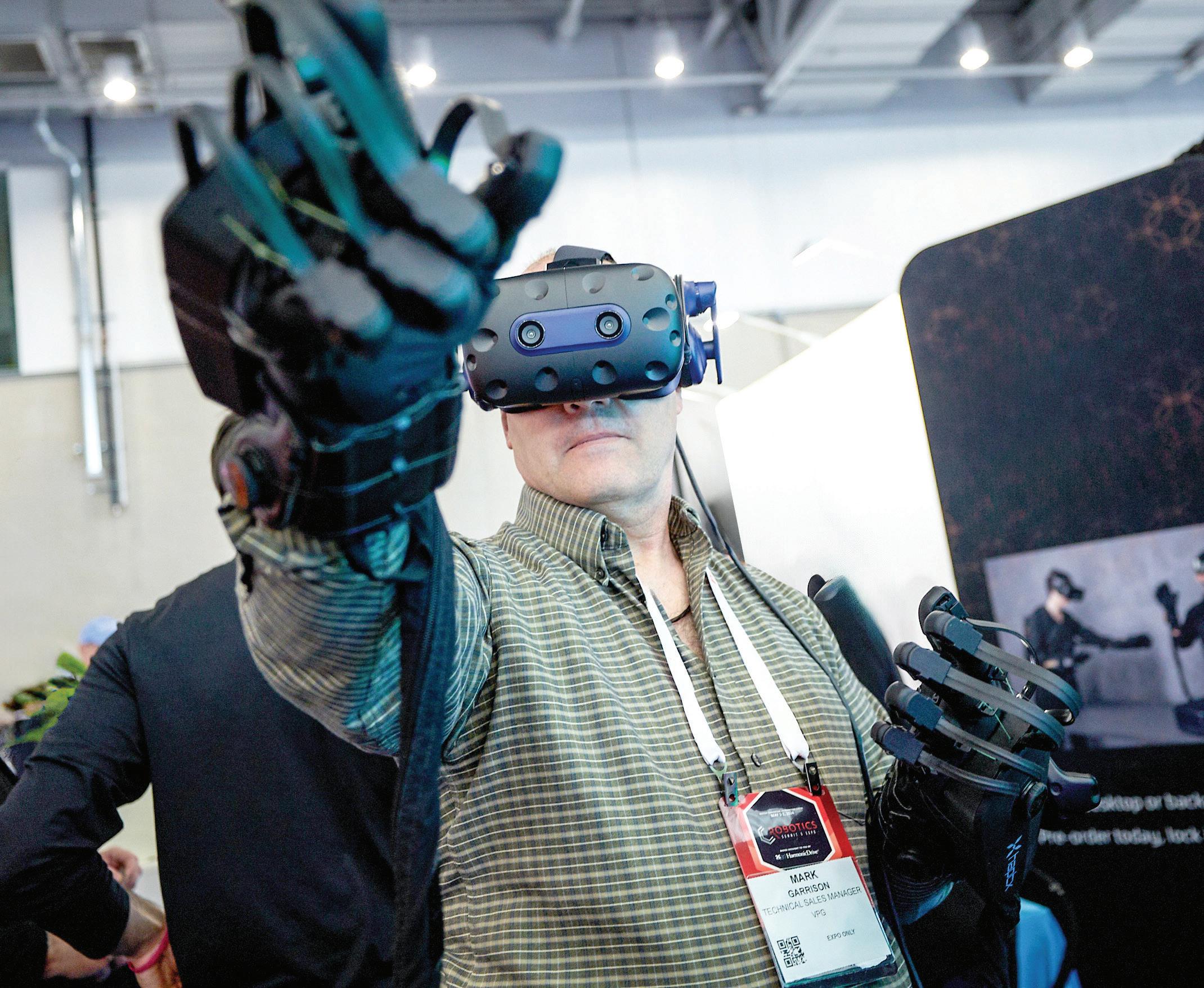

The semiconductor industry is running towards a nano-scale wall. For decades electronics have become smaller, faster and smarter. Today, a chip’s transistors are so densely packed and tiny that manufacturers are forced to build and design complex 3D architectures, at the nanometer scale, just to keep up with Moore’s Law.
“Everything is so small, every atom matters; so, we need to know where they are.” says Claudia Fleischmann, Principal Member of Technical Staff at Imec and part-time associate professor at KU Leuven. “If you can’t measure it, you can’t understand it or improve it.”
This is where atom probe tomography (APT) comes into play. Fleischmann notes it’s a unique technology option that can both identify individual atoms and measure their specific location throughout the volume of a sample. These capabilities make APT the ideal tool to better understand and characterize chips, especially during development and manufacturing.
The challenge is that APT isn’t widely used in the semiconductor industry — yet. But it’s clear manufactures should adopt it quickly as one of their tools to create the next generation of chips.

The smaller things are, the harder they are to measure or observe. And since the semiconductor industry is now designing chips at a scale of a few atoms, they don’t have the workflows needed to properly assess, understand and ensure the proper manufacturing and development of these designs.
Scanning electron microscopes (SEM) can help, but they generally provide a twodimensional image. Transmission electron microscopes (TEM) have better resolution but are often not sensitive enough to detect small amounts of dopant atoms. Ion mass spectrometry is also widely used, but it can only tell a manufacturer the average contents of a sample. Since more and more chips are designed
layer by layer, with 3D structures, tools are needed that not only characterize but also map its composition at the relevant length scales.
The difficulty of this problem is exacerbated by the fact that the materials used in the industry are becoming more complex. Things have moved past boron-doped silicon to ternary compounds, 2D materials, polymer-based materials and more. And since a design might be dictating a material span of only a few nanometers, that space might only contain a dozen or so atoms. As such, if the material in question is a mix of silicon, boron and germanium the sequence those atoms appear within the span could make a big difference to the material’s performance.
“Basically, the smaller the device goes, the more important it is that almost each atom is in the right location,” says Fleischmann,
Atom Probe data set overlayed with an HAADF-STEM image acquired from a gate-allaround (GAA) nanosheet structure, before the nanosheet release step. APT reveals the 3-dimensional dopant distribution in the boron-doped silicon liner of the source-drain region. From the 1-dimensional profile across the liner (white arrow) an average atomic density of 1.35 x 1020 B atoms/ cm3 can be deduced (right).
(Image: imec.)
“A different distribution of the atoms can cause different interactions on an atomic or nanometer scale. As that ties very much into the physics this can have a detrimental effect on the performance of a device.”
For example, an alloy in bulk might have a different resistivity than the same alloy at the nanoscale because of the few atoms that show up, and their arrangement, at that scale. This different resistivity can cause a part to fail or never work from the start.
To build the 3D structures of modern-day chips, manufacturers need to repeat many of their traditional manufacturing processes dozens, maybe hundreds, of times on a single wafer. This is because the electronics need to be produced layer by layer, etch by etch. Each step added to this repetitive production process also adds the risk of introducing errors to one, or multiple, layers. Those errors could lead to a faster degradation or failure of a device. As such, characterization tools must be capable to assess each layer after the more critical steps. This is the only way to truly ensure nothing has gone wrong.
“That also means we have to add more metrology and characterization steps [to] check we are still on the right track when processing [the] device,” adds Fleischmann. “There are not many techniques that can basically give a compositional analysis of a 3D structure. Most of the techniques are limited to just blanket films, when applied to 3D structures, you measure an array of structures that gives an average information …
How do we characterize these [chips]? We are heavily relying on more and more advanced characterization steps, where atom probe tomography would be one particular example of a very unique and very advanced characterization method.”
APT is a well-known technology outside of the semiconductor industry. But it begs explanation to many electronics manufacturers. “In principle what we do is we remove atoms from a surface, and we can analyze the type of the atom: whether it’s a silicon or boron atom,” explains Fleischmann. “In order to be able to remove the atom, we apply a trick, and the trick is that the sample is made into a very sharp needle … Then we can apply a high electric field and an ultra-short laser pulse which allows us to extract [an] atom …
This atom flies onto a detector where we can locate [its] impact position … So basically, what we do is we peel off atom-by-atom and then we reassemble all detected atoms digitally into the 3D volume. At the end we have a 3D point cloud of the analyzed volume, in which each point represents an atom.”
In other words, the tip of the sample’s needle contains just a few atoms. The combined electrical field and laser pulse then evaporates the sample one atom at a time, starting from the surface. The atoms then travel to a sensor. Where the atom hits the sensor, its position on that sensor along with the order in which it is detected, tells you where it was in the sample. The elemental nature of the atom is established based on the time it took the atom to travel from the needle to the sensor. This is the same element identification mechanisms used in ion mass spectrometry.
So, what can APT bring to the semiconductor industry? “[It’s about] building the link between the physical properties and the performance, [it is] very important to build that knowledge,” Fleischmann says. She adds its about “trying to help understand how the devices are built or … the distribution of the atoms within the device, the composition at nano-scale dimensions, the diffusion of atoms across interfaces in multilayer stacks, [...] and how that links to the [performance] of the device.”
She adds, “Once we understand this fundamental link, we need to understand which process steps and parameter need to be tuned so that we can achieve the desired outcome (distribution of atoms, interface sharpness, etcetera) that will enable the fabrication of the device with the properties we strive for.”
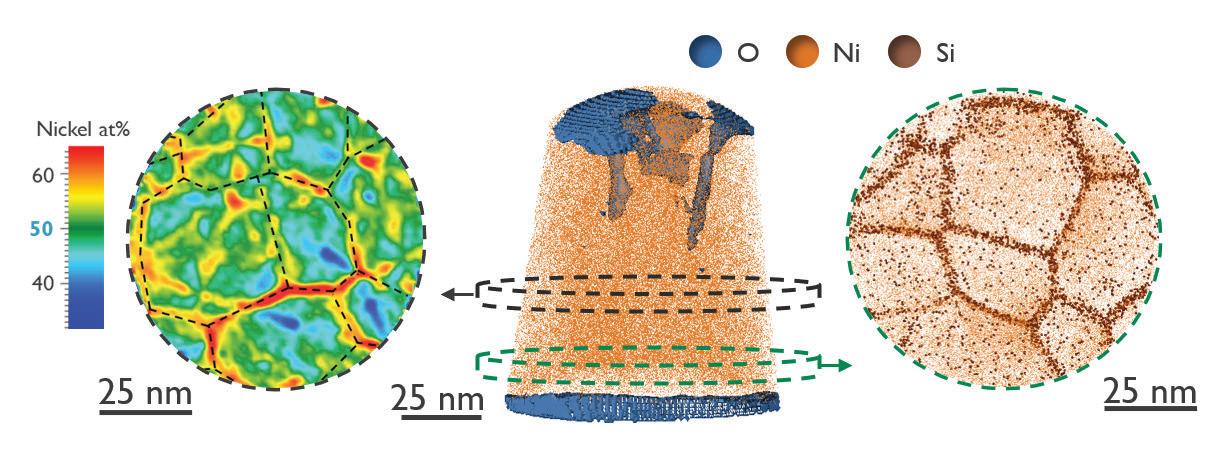
Atom probe data set obtained from a thin Ni0.5Al0.5 film, an intermetallic compound that is investigated in the context of alternative metallization schemes for advanced interconnect applications. Surface oxidation and oxygen incorporation in the film is visualized by a 10 at% oxygen iso-concentration surface (middle). A 2D Ni-concentration map reveals undesired, off-stoichiometric compositional fluctuations at the nanoscale and near microstructural features (left). Segregation of silicon atoms into grain boundaries of the Ni0.5Al0.5 film near the SiO2 substrate interface is observed in the 2D atom map (right). (Image: imec.)
As a result, APT can be used early in a chip’s development, as a means to research how different atom placements affect the performance of a device and its properties. But it can also be used while chips are being manufactured as a quality check to not only ensure the proper atoms are within a chip, but that they are also in expected geometries and locations. Finally, APT can be used to investigate why a certain part failed.
It should be noted that the volume ATP measures is tiny with respect to the dimensions of a chip, let alone the whole wafer. APT is also a destructive measurement tool. As a result, it is best used for spot checks and, potentially, failure analysis.
Unfortunately, the semiconductor industry won’t be able to instantly adopt APT into its workflows. Fleischmann cites two main reasons.
First is the quantification uncertainty when assessing the multi-component materials used in semiconductors. “I know my technique has a certain error bound, it will never be perfect,” explains Fleischmann. “Even if you take a ruler and measure a length, it will never be perfect … [When] we measure a composition with a complex [tool], like APT, we [are still working on how] to quantify how far off we are with the
measurements… [That’s] the discussion of my work. [We] are trying to understand … if you measure something, how good or bad is that result with respect to the real truth.”
Another challenge Fleischmann describes is related to image distortions when reconstructing the 3D geometry of a sample from raw data. In the real world, a sample has defined edges and straight lines. The results of the reconstructed 3D image, however, will not look as sharp in comparison. This is because the protocols used to assemble the volumes — based on where atoms hit the sensor — are still being defined for complex samples such as those used in the semiconductor industry.
Fleischmann relates it to a lens that isn’t properly focused on an image. The resultant image will be fuzzy. Once experts find the right focal point, or in this case APT protocols, they should be able to mitigate the distortions seen in the reconstruction of 3D semiconductor samples.
In either case, the answer to solving both of these challenges are the same: more testing and research is needed. And if electronics manufacturers hope to keep Moore’s law alive and well, they need to address this research quickly, so that APT can be integrated into their workflows.
Learn more about how APT is being integrated into the semiconductor industry.
CAMECA is a global supplier of microanalytical and metrology instrumentation for research and process control. As a business unit of AMETEK, the company provides a diverse range of advanced characterization technologies that measure elemental and isotropic composition in materials down to atomic resolution, as well as equipping government, academic, and high-tech industry labs around the world.
www.cameca.com • cameca.info@ametek.com

all the 2024 R&D 100 Award Winners and the 15 Lincoln Laboratory
At MIT Lincoln Laboratory, we develop solutions that have a real impact on U.S. national security. Become part of our team to perform cutting-edge research and create innovative technology for homeland protection, communications, cybersecurity, biotechnology, humanitarian assistance and disaster relief, and more.



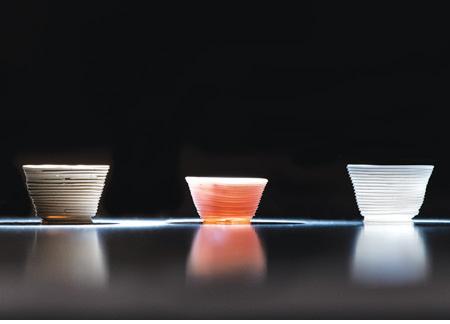


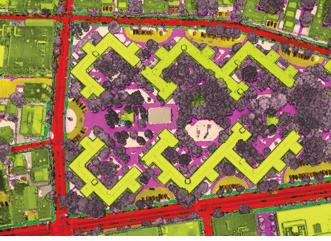
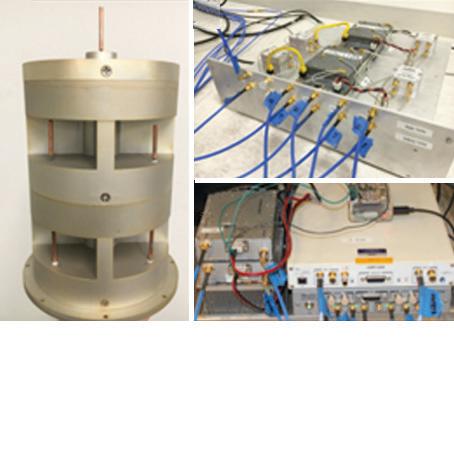





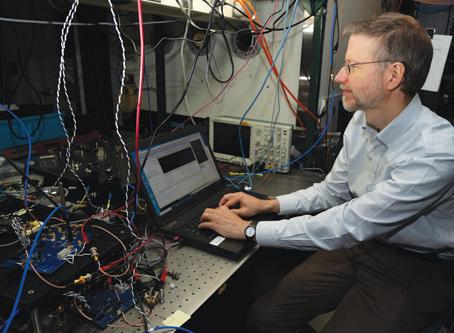



Pittcon Spectroscopy Award
Joseph S. Francisco, Ph.D. University of Pennsylvania

ACS-Analytical Division
Investigator in Separation Science Award
Xiao Su, Ph.D. University of Illinois, Urbana – Champaign

Pittcon Analytical Chemistry Award
Daniel W. Armstrong, Ph.D. University of Texas at Arlington

Chromatography Forum of Delaware Valley Dal Nogare Award
Terry A. Berger, Ph.D. In Memoriam

LCGC Emerging Leader in Chromatography Award
Katelynn Perrault Uptmor, Ph.D. College of William & Mary

Pittcon Achievement Award
Long Luo, Ph.D. University of Utah

Coblentz Society Williams-Wright Award
David W. Schiering, Ph.D. 908 Devices, Inc.

SEAC: Charles N. Reilley Award
Susan Lunte, Ph.D. University of Kansas

Ralph N. Adams Award
Lloyd M. Smith, Ph.D. University of Wisconsin – Madison

LCGC Lifetime Achievement in Chromatography Award
Christopher Pohl, Ph.D. Retired – Thermo Fisher Scientific

SEAC: Royce W. Murray Award
Hang Ren, Ph.D. University of Texas at Austin
